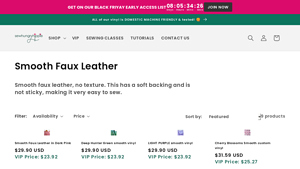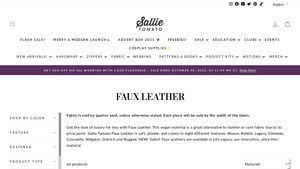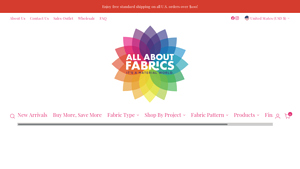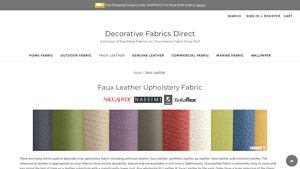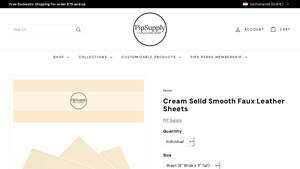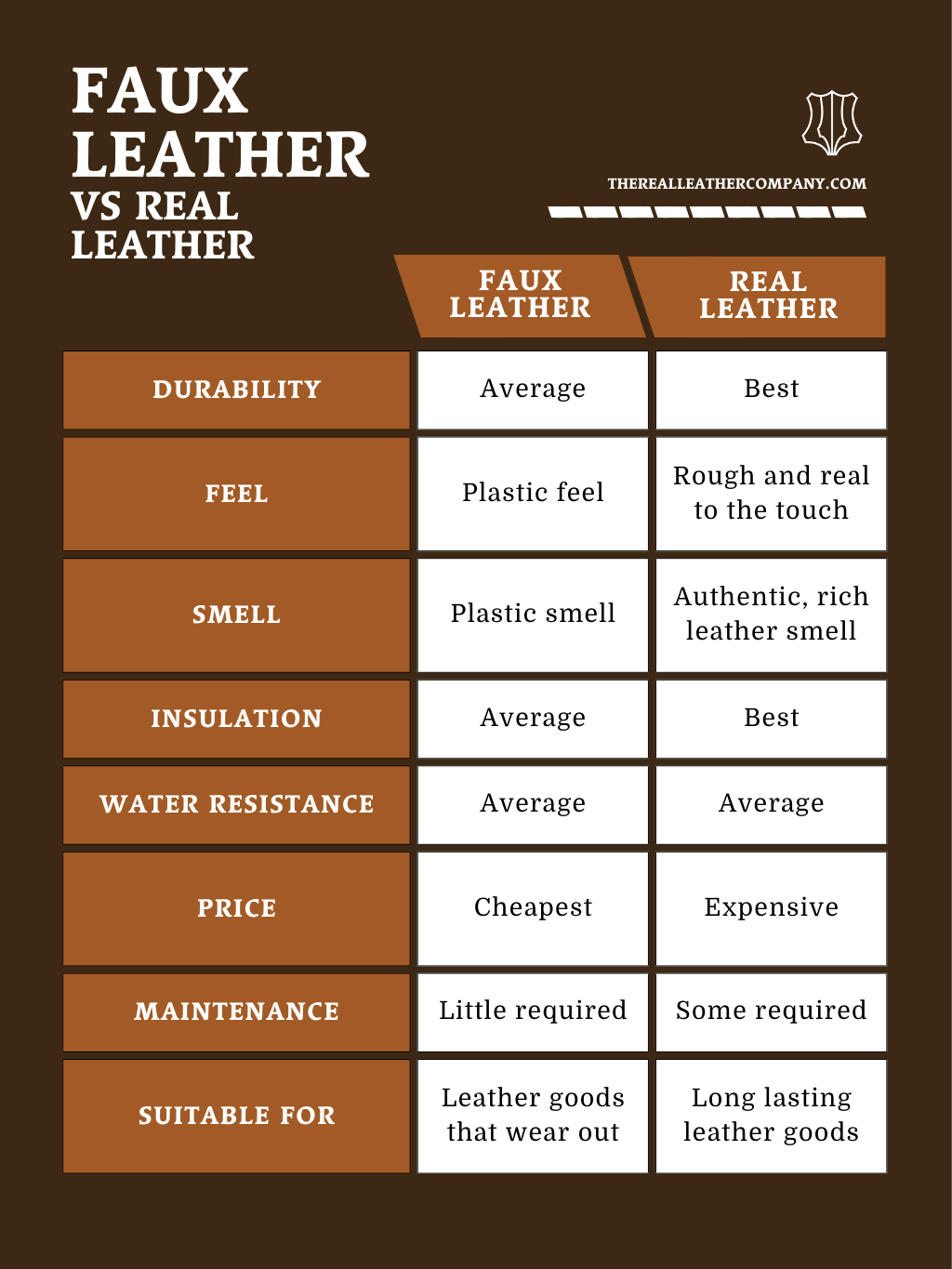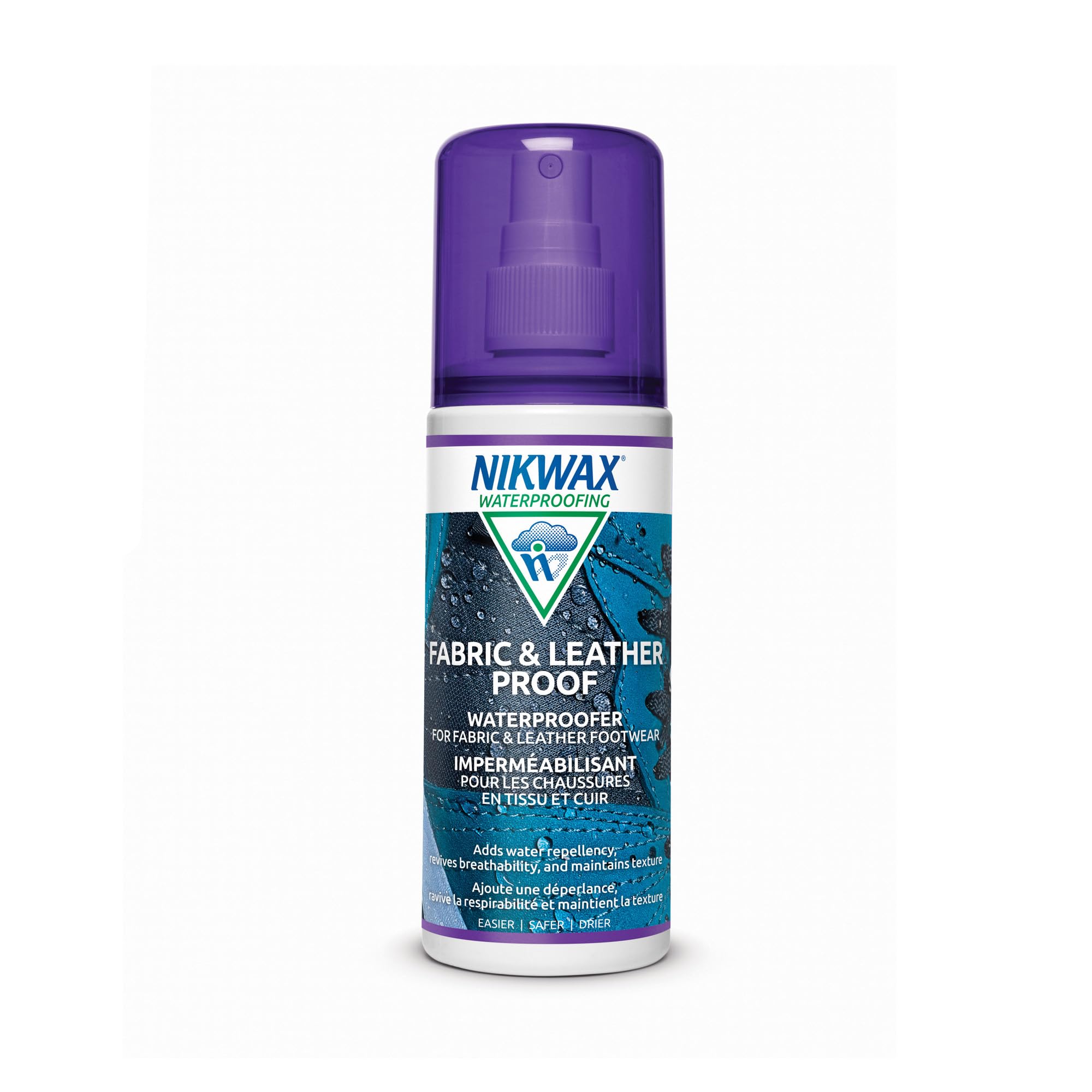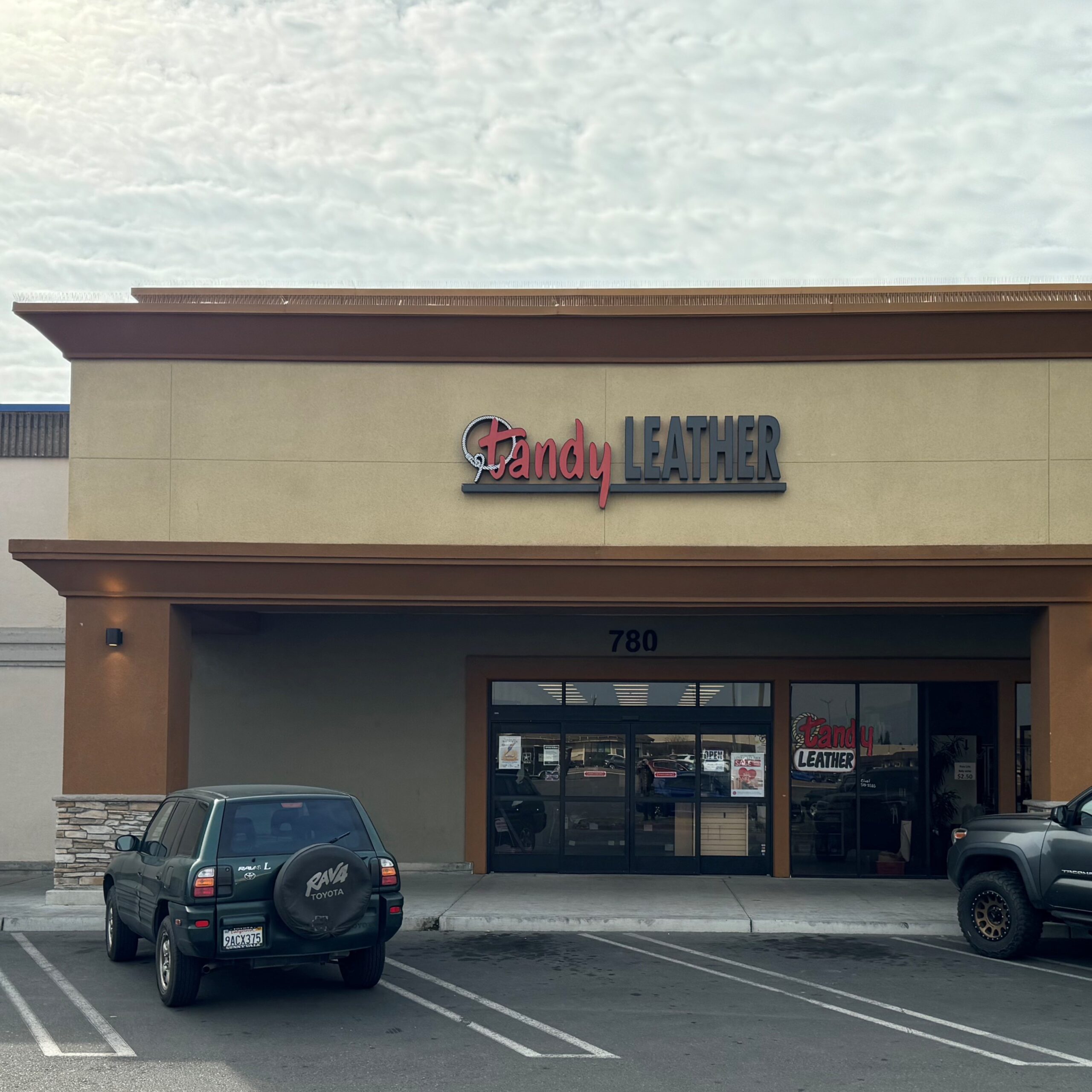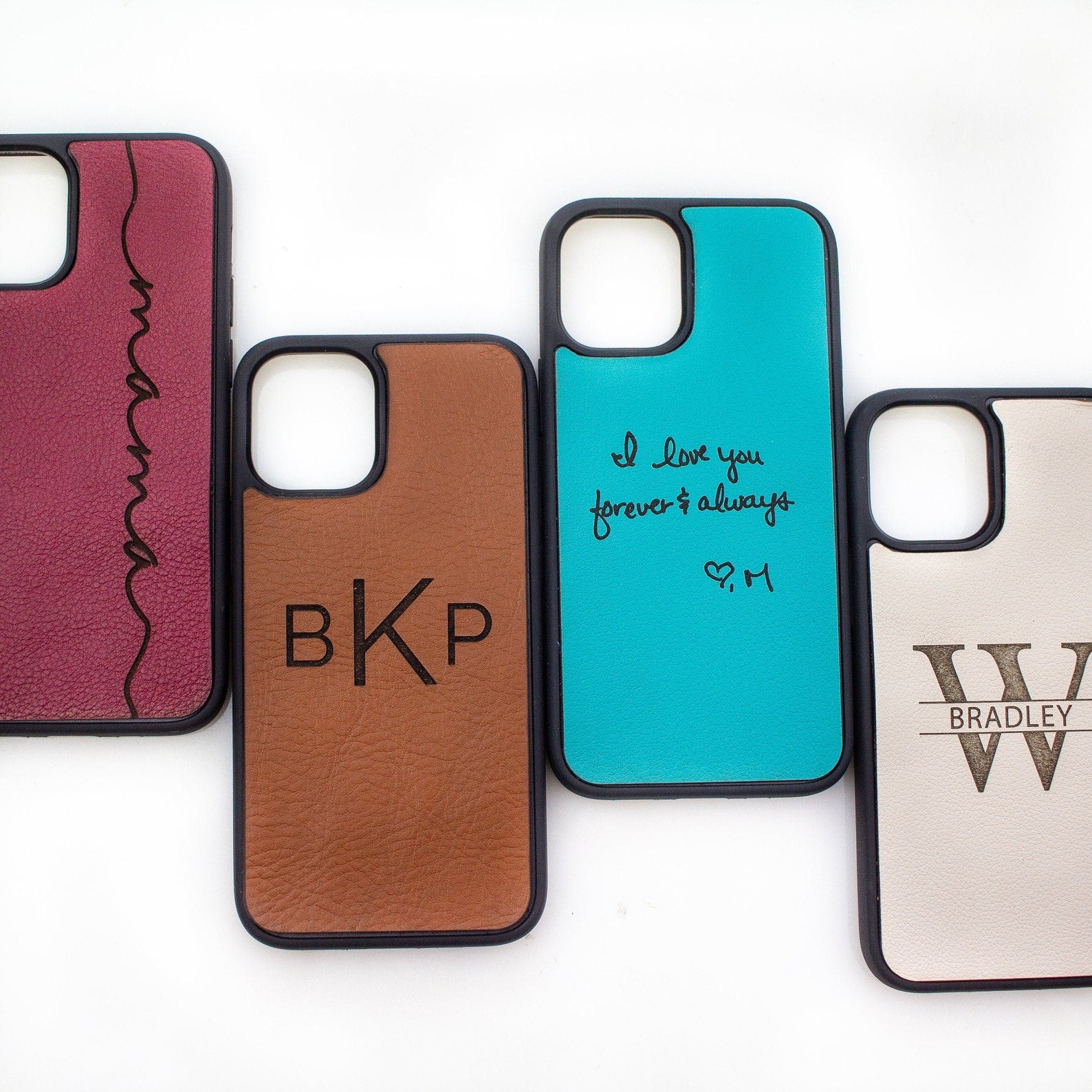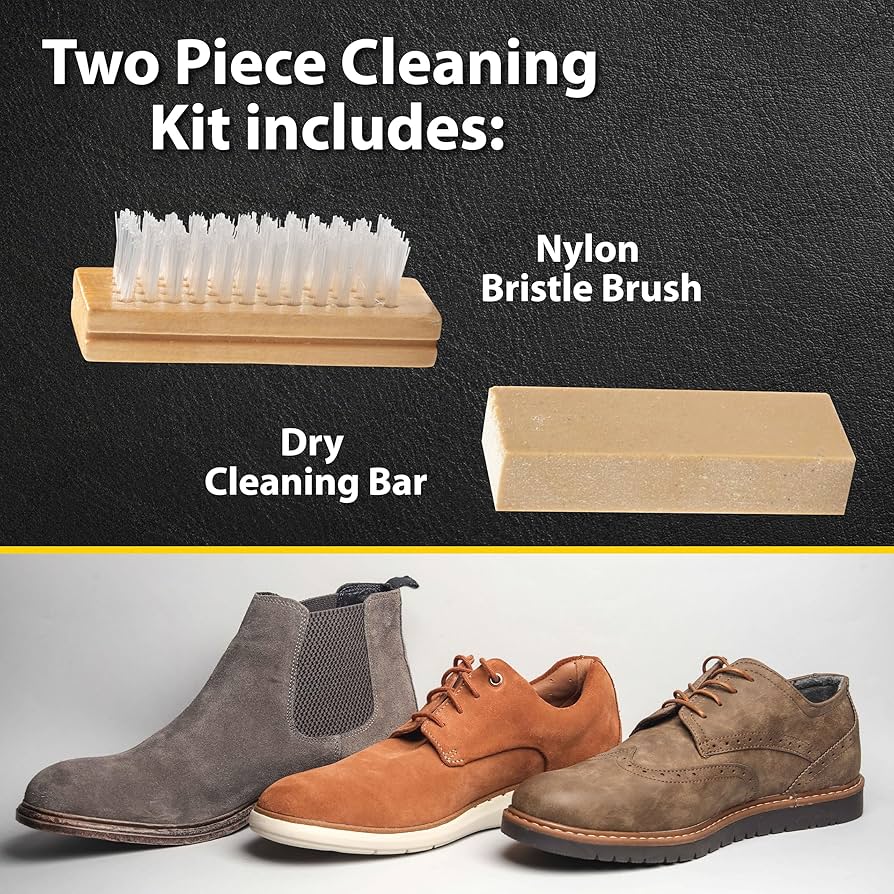Introduction: Navigating the Global Market for smooth faux leather
Navigating the global market for smooth faux leather presents a unique challenge for B2B buyers seeking high-quality materials for diverse applications. As businesses increasingly prioritize sustainability and cost-effectiveness, sourcing faux leather that mimics the luxurious feel of genuine leather without the associated expenses becomes critical. This comprehensive guide serves as an essential resource for international buyers from regions such as Africa, South America, the Middle East, and Europe—including key markets like Saudi Arabia and Germany.
Within this guide, you’ll find an in-depth analysis of various types of smooth faux leather, exploring their characteristics, applications, and benefits. We will also discuss effective supplier vetting strategies, ensuring you select trustworthy partners who can meet your quality and delivery standards. Additionally, we will provide insights into cost considerations, helping you navigate pricing structures and maximize your purchasing power.
By equipping you with the knowledge to make informed decisions, this guide empowers your business to thrive in the competitive landscape of faux leather sourcing. Whether you’re looking for materials for upholstery, fashion, or accessories, understanding the nuances of smooth faux leather will enable you to meet customer demands while enhancing your brand’s sustainability efforts.
Table Of Contents
- Top 5 Smooth Faux Leather Manufacturers & Suppliers List
- Introduction: Navigating the Global Market for smooth faux leather
- Understanding smooth faux leather Types and Variations
- Key Industrial Applications of smooth faux leather
- 3 Common User Pain Points for ‘smooth faux leather’ & Their Solutions
- Strategic Material Selection Guide for smooth faux leather
- In-depth Look: Manufacturing Processes and Quality Assurance for smooth faux leather
- Practical Sourcing Guide: A Step-by-Step Checklist for ‘smooth faux leather’
- Comprehensive Cost and Pricing Analysis for smooth faux leather Sourcing
- Alternatives Analysis: Comparing smooth faux leather With Other Solutions
- Essential Technical Properties and Trade Terminology for smooth faux leather
- Navigating Market Dynamics and Sourcing Trends in the smooth faux leather Sector
- Frequently Asked Questions (FAQs) for B2B Buyers of smooth faux leather
- Strategic Sourcing Conclusion and Outlook for smooth faux leather
- Important Disclaimer & Terms of Use
Understanding smooth faux leather Types and Variations
| Type Name | Key Distinguishing Features | Primary B2B Applications | Brief Pros & Cons for Buyers |
|---|---|---|---|
| Skóra PU | Made from polyurethane, soft and durable | Upholstery, bags, fashion accessories | Pros: Eco-friendly, easy to clean Cons: Can be less breathable than genuine leather |
| Vinyl Faux Leather | Highly versatile, often waterproof | Automotive interiors, furniture, crafts | Pros: Cost-effective, wide range of colors Cons: May not have the same luxury feel as leather |
| Skóra z mikrofibry | Soft texture, resembles genuine leather | High-end apparel, luxury bags, upholstery | Pros: Durable, stain-resistant Cons: Higher price point compared to other faux leathers |
| Smooth Textured Vinyl | Smooth finish with a slight texture for grip | Fashion items, seat covers, home decor | Pros: Attractive appearance, easy to work with Cons: Limited color options in some suppliers |
| Eco-Friendly Faux Leather | Made from recycled materials, sustainable choice | Eco-conscious brands, upscale fashion items | Pros: Sustainable, innovative Cons: Potentially higher costs, variable availability |
What are the characteristics of PU Leather and its B2B relevance?
PU leather, or polyurethane leather, is known for its softness and durability. This type of faux leather is often used in upholstery, bags, and fashion accessories due to its luxurious appearance and feel. For B2B buyers, the eco-friendliness of PU leather is a significant selling point, as it is often produced without harmful chemicals. When sourcing PU leather, businesses should consider its cleaning ease and durability, which can enhance product longevity and customer satisfaction.
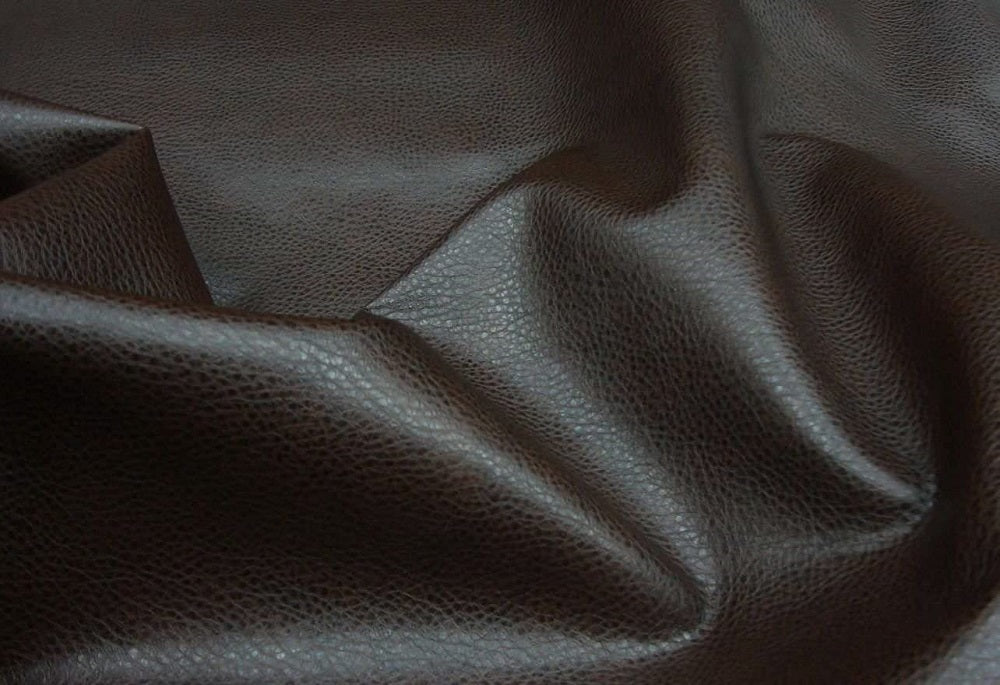
Illustrative image related to smooth faux leather
How does Vinyl Faux Leather stand out in various applications?
Vinyl faux leather is a highly versatile material, often utilized in automotive interiors, furniture, and crafts. Its waterproof nature makes it particularly attractive for applications where moisture resistance is critical. B2B buyers should note that while vinyl faux leather is cost-effective and available in a myriad of colors, it may lack the luxurious feel of genuine leather. When purchasing, businesses should ensure they are sourcing high-quality vinyl to avoid issues with wear and tear.
What makes Microfiber Leather a preferred choice for premium products?
Microfiber leather offers a soft texture that closely resembles genuine leather, making it a popular choice for high-end apparel, luxury bags, and upholstery. Its durability and stain resistance are key advantages for B2B buyers looking for long-lasting materials. However, the price point can be higher compared to other faux leather types, which may affect bulk purchasing decisions. Companies should evaluate the target market’s willingness to invest in premium materials when considering microfiber leather.
Why choose Smooth Textured Vinyl for fashion and decor?
Smooth textured vinyl is characterized by its sleek finish and slight texture, making it ideal for fashion items, seat covers, and home decor applications. Its attractive appearance and ease of use in production make it a favorite among manufacturers. However, B2B buyers should be aware that color options may be limited depending on suppliers. When sourcing this material, companies should prioritize suppliers that offer a range of colors and textures to meet diverse design needs.
What are the benefits of Eco-Friendly Faux Leather for conscious brands?
Eco-friendly faux leather is crafted from recycled materials, appealing to brands that prioritize sustainability. This type of faux leather is increasingly popular in upscale fashion items, as consumers seek environmentally responsible products. While the potential for higher costs and variable availability may pose challenges, the growing demand for sustainable options makes this material a worthwhile consideration for B2B buyers. Companies should assess their target audience’s values when integrating eco-friendly materials into their product lines.
Key Industrial Applications of smooth faux leather
| Industry/Sector | Specific Application of smooth faux leather | Value/Benefit for the Business | Key Sourcing Considerations for this Application |
|---|---|---|---|
| Fashion & Accessories | Handbags and wallets | Offers a cost-effective alternative to genuine leather, appealing to eco-conscious consumers. | Quality of material, color options, and texture consistency are critical. |
| Automotive | Upholstery for car interiors | Durable and easy to clean, enhancing vehicle aesthetics while reducing overall costs. | Compliance with automotive standards and availability in bulk are essential. |
| Furniture | Upholstery for sofas and chairs | Provides a stylish and low-maintenance solution, increasing customer satisfaction. | Consider durability ratings and fire safety compliance for various markets. |
| Home Decor | Decorative cushions and wall coverings | Versatile design options that enhance interior aesthetics without the high cost of leather. | Availability in various colors and patterns, as well as ease of cleaning, are important. |
| Pet Products | Pet beds and carriers | Durable and easy to clean, providing comfort for pets while ensuring longevity of products. | Must meet safety standards and be resistant to wear from pet use. |
How is Smooth Faux Leather Used in the Fashion & Accessories Industry?
In the fashion industry, smooth faux leather is frequently utilized for crafting handbags and wallets. This material provides a luxurious appearance at a fraction of the cost of genuine leather, making it particularly attractive to eco-conscious consumers. International buyers from regions such as Europe and South America should consider the quality of the material and the variety of colors available, as these factors significantly influence consumer purchasing decisions.
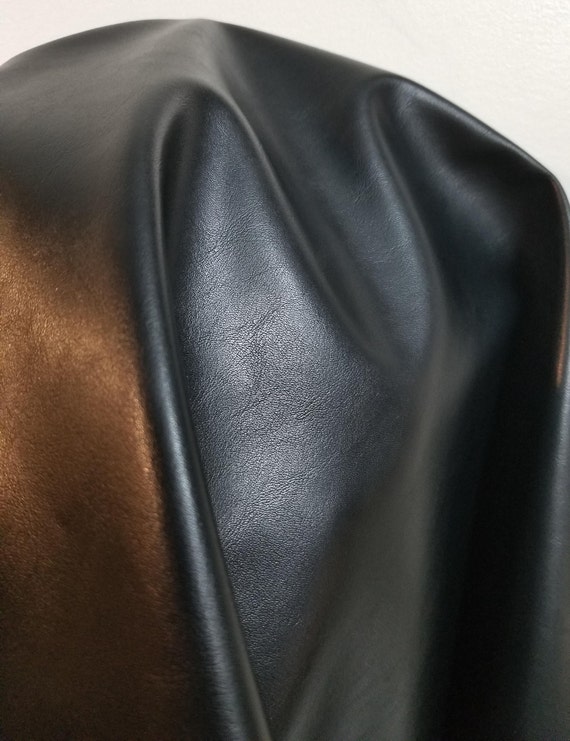
Illustrative image related to smooth faux leather
What Role Does Smooth Faux Leather Play in the Automotive Sector?
Smooth faux leather serves as a popular choice for automotive upholstery due to its durability and ease of cleaning. It enhances the aesthetic appeal of car interiors while being a cost-effective alternative to genuine leather. B2B buyers in the automotive sector, particularly from the Middle East and Africa, should ensure that the materials comply with industry standards and are available in bulk quantities to meet manufacturing needs.
How is Smooth Faux Leather Beneficial for Furniture Upholstery?
In the furniture industry, smooth faux leather is widely used for upholstering sofas and chairs. It offers a stylish solution that is low-maintenance, appealing to consumers who desire aesthetics without the high upkeep associated with genuine leather. Buyers should focus on the material’s durability ratings and fire safety compliance, especially in markets with stringent regulations, such as Germany.
In What Ways is Smooth Faux Leather Applied in Home Decor?
Smooth faux leather is increasingly popular in home decor, utilized for decorative cushions and wall coverings. It provides versatile design options that enhance interior aesthetics without the high costs associated with genuine leather. International buyers should prioritize the availability of various colors and patterns, as well as the ease of cleaning, which are essential for maintaining product appeal in diverse markets.
Why is Smooth Faux Leather Ideal for Pet Products?
In the pet products sector, smooth faux leather is utilized for pet beds and carriers. Its durability and ease of cleaning make it an excellent choice for items that endure heavy use. B2B buyers must ensure that the materials meet safety standards and resist wear from pet use, as this will directly impact customer satisfaction and product longevity in competitive markets.
3 Common User Pain Points for ‘smooth faux leather’ & Their Solutions
Scenario 1: Sourcing Quality Smooth Faux Leather for Diverse Applications
The Problem:
B2B buyers, particularly those in industries like upholstery, fashion, or accessories, often struggle with sourcing high-quality smooth faux leather. This material is widely available, but the market is saturated with varying qualities, colors, and textures. Buyers may receive samples that look promising but fail to meet durability, softness, or performance standards when used in final products. Additionally, discrepancies in quality can lead to increased costs and delays in production, as reordering or sourcing alternatives can disrupt the supply chain.
The Solution:
To overcome these sourcing challenges, B2B buyers should establish a robust vendor evaluation process. Start by identifying suppliers who specialize in smooth faux leather and have a solid reputation within the industry. Request detailed product specifications, including material composition, weight, and durability ratings. Utilize third-party testing services to verify quality before placing bulk orders. It is also advisable to establish partnerships with multiple suppliers to mitigate risks associated with relying on a single source. Finally, consider attending trade shows or industry expos, as these events provide opportunities to inspect materials firsthand and forge relationships with manufacturers who can offer custom solutions tailored to specific needs.
Scenario 2: Addressing Environmental Concerns with Faux Leather Choices
The Problem:
As sustainability becomes a significant concern globally, B2B buyers in sectors like fashion and furniture face pressure to select eco-friendly materials. Many smooth faux leather options are derived from synthetic materials that may not align with sustainable practices, leading to potential backlash from environmentally conscious consumers. Buyers are often left confused about which products are genuinely sustainable and which are merely marketed as such.
The Solution:
To address environmental concerns, B2B buyers should prioritize sourcing from manufacturers who provide transparent information regarding the environmental impact of their products. Look for certifications such as OEKO-TEX or GOTS (Global Organic Textile Standard) that indicate adherence to eco-friendly practices. Additionally, consider suppliers who offer innovative materials made from recycled or bio-based materials, such as polyurethane (PU) leather that is free from harmful chemicals. Engaging with suppliers on their sustainability practices and requesting transparency can ensure that your sourcing decisions align with both ethical standards and consumer expectations.
Scenario 3: Navigating the Challenges of Working with Smooth Faux Leather
The Problem:
B2B buyers often encounter difficulties when it comes to working with smooth faux leather in terms of sewing and fabrication. This material, while generally easy to work with, can present challenges such as slipping or puckering during the sewing process. Furthermore, without the right tools and techniques, the finished products may lack the desired professional look, leading to dissatisfaction among clients and end-users.
The Solution:
To effectively navigate the challenges of working with smooth faux leather, B2B buyers should invest in specialized tools and techniques. Begin by using a walking foot sewing machine or Teflon foot to prevent slipping and ensure even feeding of the material. Additionally, utilize quality needles specifically designed for leather or heavy fabrics, as these will penetrate the material without causing damage. It’s beneficial to provide training sessions for staff on sewing techniques unique to faux leather, such as using longer stitch lengths and proper handling methods. Lastly, incorporating samples and prototypes into the design process can help identify potential issues before full-scale production begins, ensuring that the final products meet quality standards and client expectations.
Strategic Material Selection Guide for smooth faux leather
Smooth faux leather is increasingly popular in various industries, including fashion, upholstery, and automotive applications. Understanding the different materials used to create smooth faux leather is essential for B2B buyers looking to make informed purchasing decisions. This guide examines four common materials used in smooth faux leather production, highlighting their properties, advantages, disadvantages, and considerations for international buyers.
What Are the Key Properties of Polyurethane (PU) Faux Leather?
Polyurethane (PU) is a widely used material for smooth faux leather due to its versatility and performance characteristics. PU faux leather exhibits excellent flexibility and softness, making it suitable for applications requiring a luxurious feel. It has a good temperature resistance, typically ranging from -30°C to 80°C, and is resistant to UV light, which helps maintain color integrity over time. PU is also water-resistant, making it easy to clean and maintain.
Pros: PU faux leather is durable, lightweight, and available in various colors and textures. It is also more environmentally friendly than PVC, as it does not release harmful chemicals during production.
Cons: While PU is durable, it may not be as robust as genuine leather or other synthetic alternatives like PVC. It can also be more expensive than PVC options.
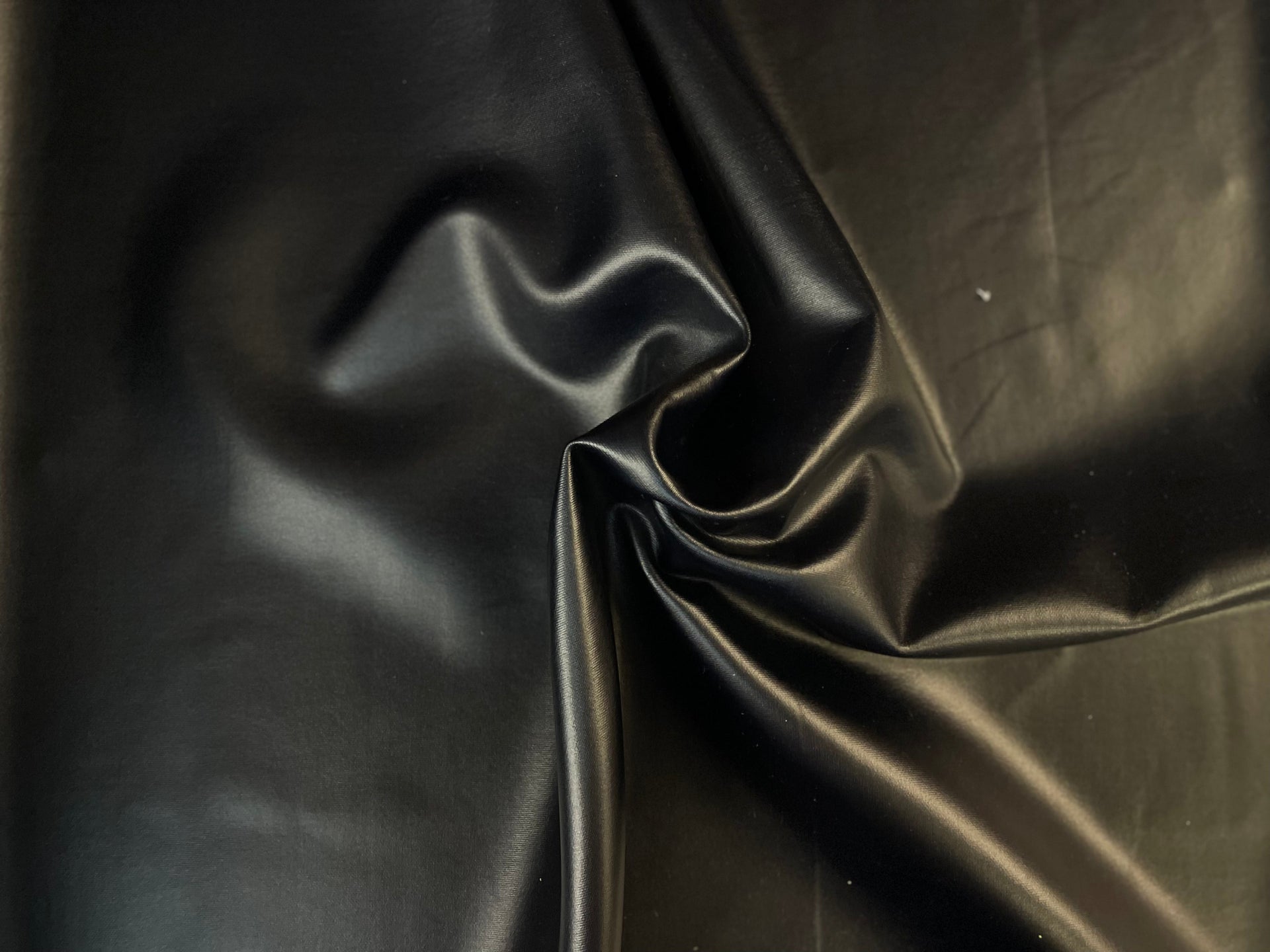
Illustrative image related to smooth faux leather
Impact on Application: PU’s softness and flexibility make it ideal for high-end fashion items, upholstery, and automotive interiors. However, its lower durability may limit its use in heavy-duty applications.
How Does Polyvinyl Chloride (PVC) Compare to Other Materials?
Polyvinyl Chloride (PVC) is another common material for smooth faux leather, known for its affordability and durability. PVC faux leather can withstand a wide range of temperatures, typically from -10°C to 60°C, and is resistant to abrasion and tearing. It is also highly resistant to water and chemicals, making it suitable for various applications.
Pros: The primary advantage of PVC faux leather is its cost-effectiveness, making it an attractive option for bulk purchases. It is also easy to clean and maintain, which is crucial for industries like automotive and hospitality.
Cons: PVC is less breathable than PU, which can lead to discomfort in applications like clothing. It is also less environmentally friendly, as the production process can release harmful chemicals.
Impact on Application: PVC is ideal for applications where cost is a primary concern, such as budget-friendly upholstery and disposable items. However, its lack of breathability may limit its use in fashion applications.
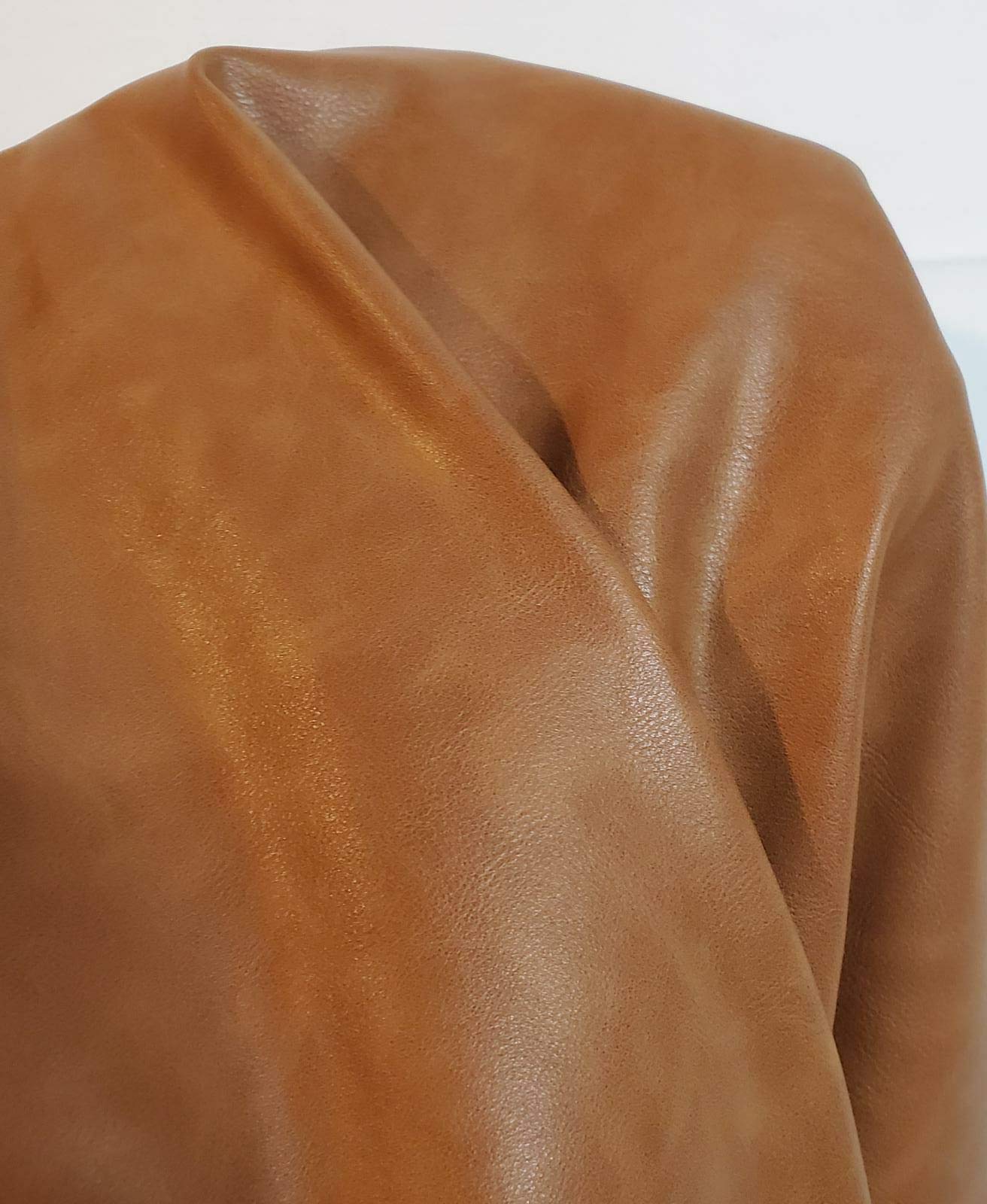
Illustrative image related to smooth faux leather
What Are the Benefits of Recycled Materials in Faux Leather?
Recycled materials, often derived from post-consumer plastics, are increasingly being used to create smooth faux leather. These materials can offer similar properties to traditional PU and PVC, with the added benefit of being more sustainable.
Pros: The use of recycled materials reduces waste and environmental impact, appealing to eco-conscious consumers. They often maintain good durability and flexibility, making them suitable for various applications.
Cons: The performance of recycled faux leather can vary significantly based on the quality of the recycled materials used. Additionally, the manufacturing process may be more complex, potentially leading to higher costs.
Impact on Application: Recycled faux leather is suitable for brands focused on sustainability, making it ideal for fashion and upholstery applications that prioritize eco-friendliness.
What Should International Buyers Consider When Sourcing Smooth Faux Leather?
International buyers, particularly from regions like Africa, South America, the Middle East, and Europe, should consider compliance with local regulations and standards, such as ASTM, DIN, or JIS. Understanding the specific preferences and market demands in these regions is crucial. For instance, buyers in Germany may prioritize eco-friendly materials, while those in Saudi Arabia may focus on durability and ease of maintenance.
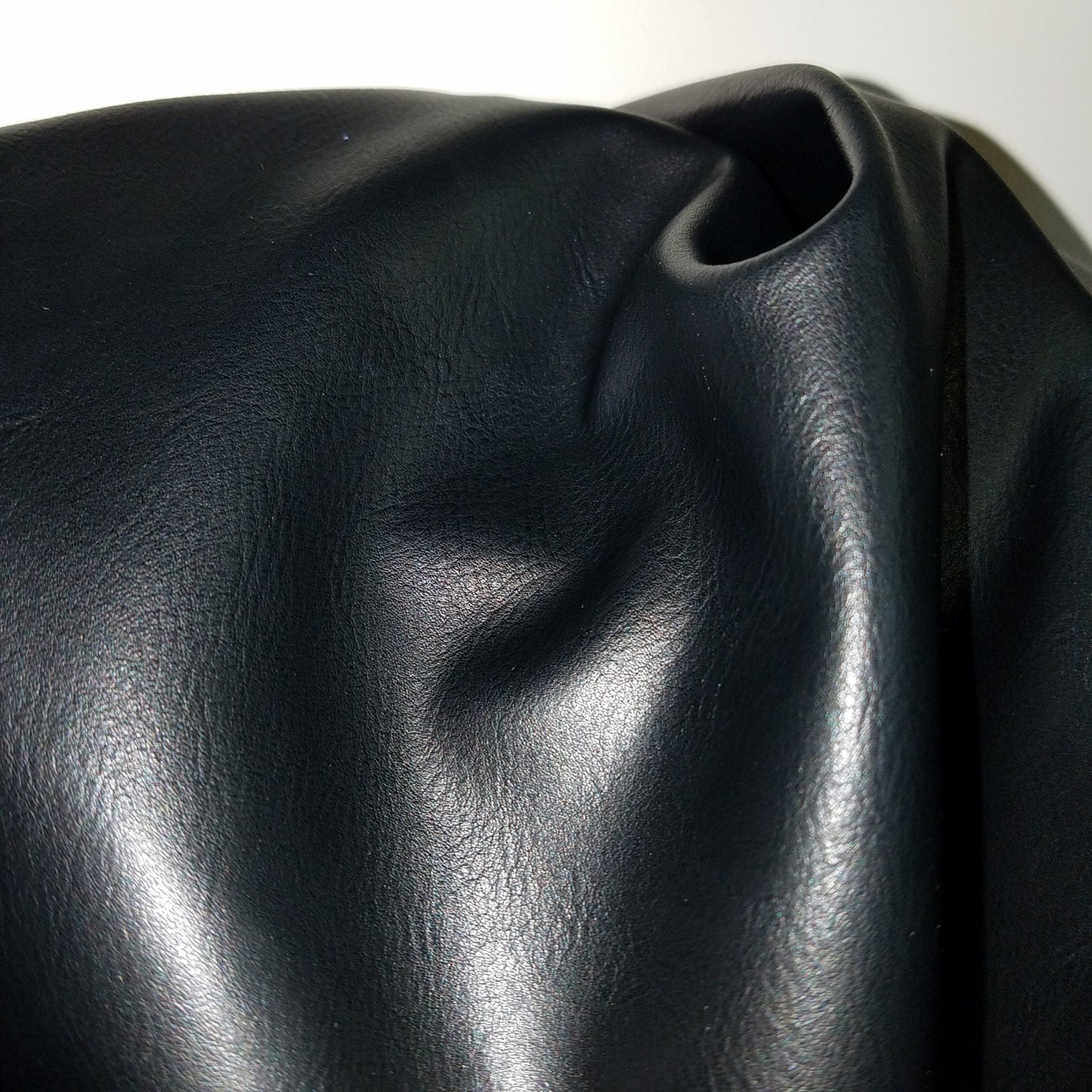
Illustrative image related to smooth faux leather
Additionally, buyers should assess the supply chain logistics, including shipping costs and lead times, to ensure timely delivery of materials. Establishing relationships with reliable suppliers who can meet quality and compliance standards is essential for successful procurement.
Summary Table
| Materiał | Typical Use Case for smooth faux leather | Key Advantage | Key Disadvantage/Limitation | Relative Cost (Low/Med/High) |
|---|---|---|---|---|
| Polyurethane (PU) | Fashion items, upholstery, automotive interiors | Softness and flexibility | Less robust than genuine leather | Medium |
| Polyvinyl Chloride (PVC) | Budget upholstery, disposable items | Cost-effective | Less breathable, less eco-friendly | Low |
| Recycled Materials | Sustainable fashion, eco-friendly upholstery | Reduced environmental impact | Variable performance, higher costs | Medium |
| Synthetic Leather | General use in various applications | Good durability and easy maintenance | May lack the luxury feel of genuine leather | Medium |
This strategic material selection guide provides B2B buyers with critical insights into smooth faux leather materials, enabling informed decisions that align with their business needs and market expectations.
In-depth Look: Manufacturing Processes and Quality Assurance for smooth faux leather
What are the Main Stages in the Manufacturing Process of Smooth Faux Leather?
The manufacturing process of smooth faux leather involves several key stages, each critical to ensuring high-quality output.
-
Material Preparation: The primary materials used in smooth faux leather production are polyvinyl chloride (PVC) or polyurethane (PU). These materials are sourced in bulk and undergo initial quality checks to ensure they meet specified standards. The materials are then blended with additives to enhance properties such as flexibility, durability, and texture.
-
Forming: During the forming stage, the prepared materials are extruded or coated onto a substrate, typically a textile backing. This process is crucial for achieving the desired thickness and finish. Techniques such as calendaring, where the material is passed through rollers, are often employed to ensure an even surface and consistent thickness across the entire sheet.
-
Assembly: In this stage, sheets of faux leather are cut into specified dimensions for various applications, such as upholstery, bags, or garments. Automated cutting machines ensure precision, which is essential for minimizing waste and maximizing material usage.
-
Finishing: The finishing process involves applying various treatments to enhance the appearance and functionality of the faux leather. This may include embossing for texture, dyeing for color, or applying protective coatings to improve resistance to water and stains. The finishing stage also includes curing, where the material is heated to set the applied finishes.
What Key Techniques are Used in the Production of Smooth Faux Leather?
Several techniques are employed throughout the manufacturing process to ensure the quality and performance of smooth faux leather:
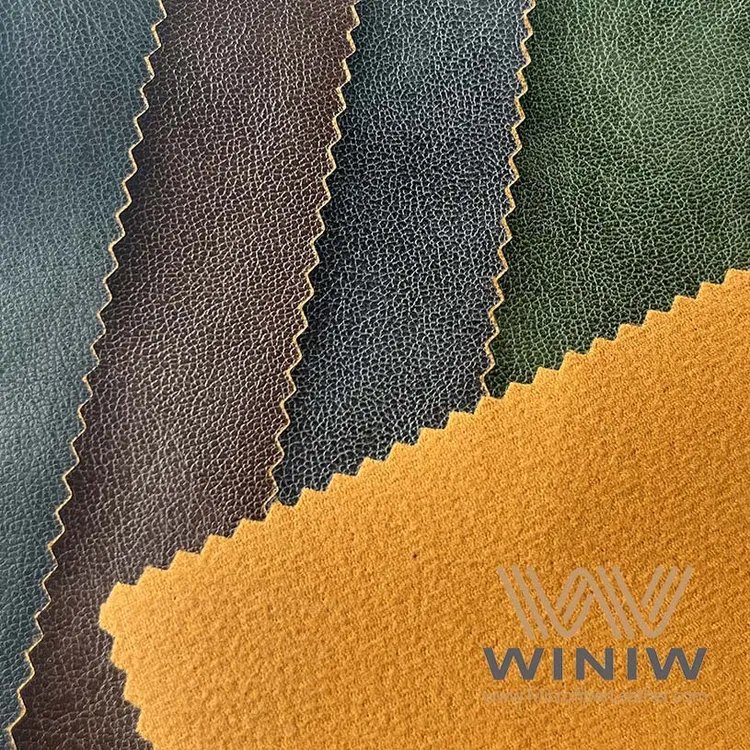
Illustrative image related to smooth faux leather
-
Coating and Laminating: This involves applying a layer of PVC or PU to a fabric backing. The choice of backing material can affect the final product’s flexibility and durability.
-
Heat Setting: This technique stabilizes the material after it has been formed, ensuring it retains its shape and properties under various conditions.
-
Surface Treatments: These include processes like polishing or glazing to achieve a smooth, high-gloss finish. Such treatments are essential for aesthetic appeal and can enhance the tactile experience of the faux leather.
How is Quality Assurance Implemented in Smooth Faux Leather Manufacturing?
Quality assurance (QA) is a critical component of the manufacturing process, ensuring that the final product meets both industry standards and customer expectations.
-
International Standards Compliance: Adhering to international standards such as ISO 9001 is crucial for manufacturers targeting global markets. This standard outlines requirements for a quality management system, ensuring consistency in product quality and customer satisfaction.
-
Industry-Specific Certifications: Depending on the application, manufacturers may also seek certifications such as CE marking for products sold in Europe or compliance with specific industry standards like API for automotive applications.
-
Quality Control Checkpoints: Quality control is typically structured around several key checkpoints:
– Incoming Quality Control (IQC): This involves inspecting raw materials upon arrival to ensure they meet predefined specifications before production begins.
– In-Process Quality Control (IPQC): Quality checks conducted during various stages of production help identify any deviations from standards early in the process.
– Final Quality Control (FQC): This final inspection ensures that the finished product meets all quality standards before it is shipped to customers.
What Common Testing Methods are Used to Ensure Smooth Faux Leather Quality?
To ensure the quality of smooth faux leather, manufacturers employ a range of testing methods:
-
Physical Testing: This includes tensile strength tests, abrasion resistance tests, and tear resistance tests to assess the material’s durability and performance under stress.
-
Chemical Testing: Manufacturers often conduct tests for VOC emissions, water resistance, and chemical stability to ensure safety and compliance with environmental regulations.
-
Visual Inspection: A thorough visual inspection helps identify defects such as color inconsistencies, surface imperfections, or misalignment, which can affect the product’s overall quality.
How Can B2B Buyers Verify Supplier Quality Control?
B2B buyers must ensure that their suppliers maintain rigorous quality control processes. Here are actionable steps to verify supplier QC:
-
Supplier Audits: Conducting on-site audits allows buyers to assess the manufacturer’s adherence to quality standards and their production processes. This firsthand experience can provide insights into the supplier’s commitment to quality.
-
Quality Reports and Certifications: Requesting documentation of quality control processes, including reports from third-party inspections, can help verify that the supplier meets necessary standards and certifications.
-
Third-Party Inspection Services: Engaging independent inspection services can provide an objective assessment of the supplier’s quality control measures and product quality.
What Are the QC/CERT Nuances for International B2B Buyers?
For B2B buyers, especially those from regions like Africa, South America, the Middle East, and Europe, understanding the nuances of quality control and certification is essential:
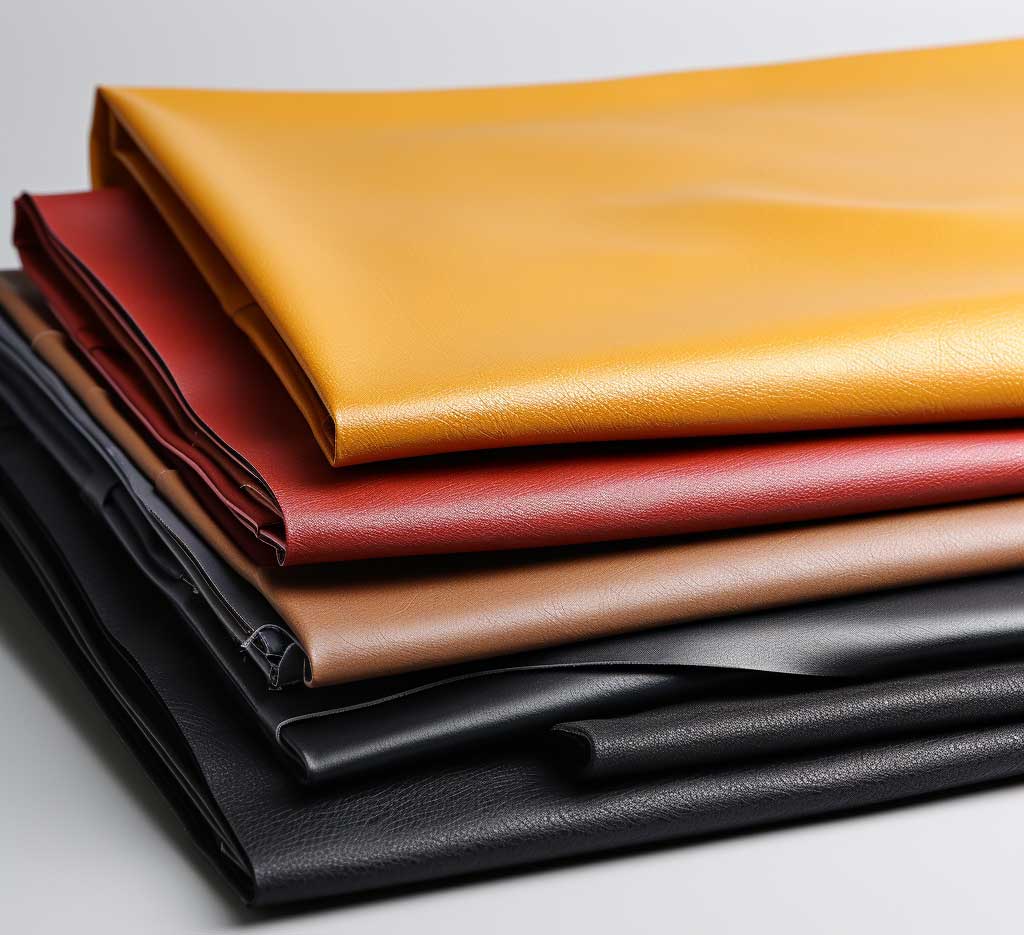
Illustrative image related to smooth faux leather
-
Regional Compliance: Different regions may have specific compliance requirements. For instance, products sold in Europe must meet CE marking standards, while buyers in the Middle East may require certifications aligned with local regulations.
-
Logistics and Supply Chain: Understanding the logistics of sourcing faux leather, including potential import/export regulations and tariffs, is vital for maintaining quality throughout the supply chain.
-
Cultural Considerations: Buyers should also be aware of cultural differences that may influence business practices and expectations regarding quality and communication.
By comprehensively understanding the manufacturing processes and quality assurance measures for smooth faux leather, B2B buyers can make informed decisions, ensuring they select suppliers that meet their quality and compliance needs. This knowledge not only helps in sourcing high-quality products but also strengthens partnerships in a competitive global market.
Practical Sourcing Guide: A Step-by-Step Checklist for ‘smooth faux leather’
In the competitive landscape of B2B procurement, sourcing smooth faux leather requires a methodical approach to ensure quality, cost-effectiveness, and sustainability. This guide offers a structured checklist to help international buyers navigate the sourcing process efficiently.
Step 1: Define Your Technical Specifications
Establishing clear technical specifications is crucial for ensuring that the smooth faux leather meets your requirements. Consider factors such as thickness, backing material, and intended application—whether for upholstery, bags, or garments. Defining these specifications upfront will help streamline the selection process and ensure that suppliers can meet your needs.
- Grubość: Ensure the material’s thickness aligns with your product requirements.
- Backing Material: Choose a backing that offers durability and comfort, depending on the application.
Step 2: Research Potential Suppliers
Conduct thorough research to identify reputable suppliers that specialize in smooth faux leather. Look for suppliers with a strong track record in quality and customer service, especially those with experience in your target regions such as Africa, South America, the Middle East, and Europe. Utilize industry directories and trade shows to gather a list of potential candidates.
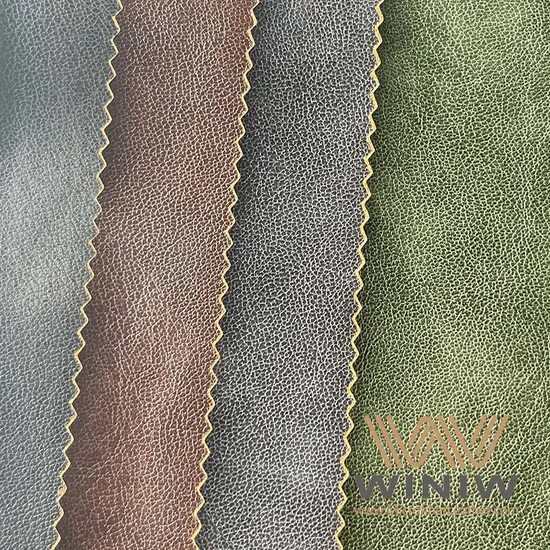
Illustrative image related to smooth faux leather
- Trade Shows: Attend relevant trade shows to meet suppliers and view samples in person.
- Online Reviews: Check online reviews and ratings to gauge the reliability of suppliers.
Step 3: Evaluate Potential Suppliers
Before committing, it’s crucial to vet suppliers thoroughly. Request company profiles, case studies, and references from buyers in a similar industry or region. This step will provide insights into the supplier’s operational capabilities and reliability, helping you make an informed decision.
- Certifications: Verify if the supplier holds relevant certifications that demonstrate compliance with industry standards.
- Zdolność produkcyjna: Ensure the supplier has the capacity to meet your order volumes, especially for larger projects.
Step 4: Request Samples
Always request samples of the smooth faux leather before finalizing any order. This is essential for assessing the quality, texture, and color accuracy of the material. Evaluate how well the samples align with your technical specifications and intended uses.
- Testing: Conduct necessary tests on the samples to assess durability, colorfastness, and ease of cleaning.
- Comparison: Compare samples from multiple suppliers to find the best fit for your needs.
Step 5: Negotiate Pricing and Terms
Once you have selected a preferred supplier, engage in negotiations to secure favorable pricing and payment terms. Consider bulk order discounts and shipping costs, as these can significantly impact your overall budget. Ensure that all terms are clearly outlined in a purchase agreement.
- Payment Terms: Discuss payment terms that suit both parties, such as deposits or payment upon delivery.
- Shipping Costs: Clarify shipping arrangements and costs, particularly for international shipments.
Step 6: Confirm Quality Control Measures
Before placing a large order, confirm the quality control measures that the supplier has in place. Understanding their quality assurance processes will help mitigate the risk of receiving subpar materials.
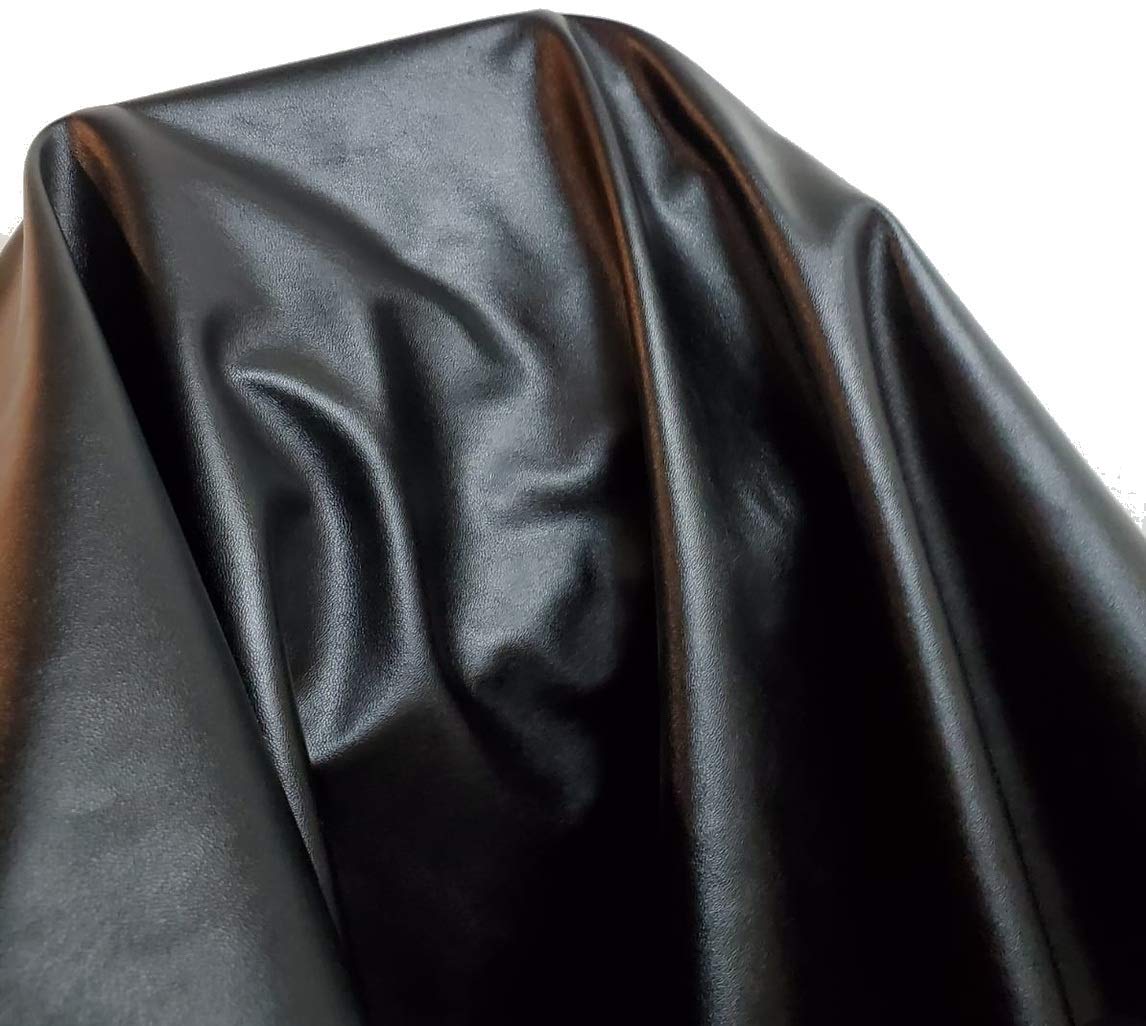
Illustrative image related to smooth faux leather
- Inspection Protocols: Inquire about the inspection protocols for outgoing shipments.
- Return Policies: Understand the return policies in case the delivered materials do not meet your specifications.
Step 7: Build a Long-term Relationship
Establishing a long-term relationship with your supplier can lead to better terms, priority service, and improved collaboration on future projects. Regular communication and feedback can enhance the partnership, ensuring that both parties benefit over time.
- Regular Check-ins: Schedule regular check-ins to discuss performance and any potential improvements.
- Feedback Mechanism: Implement a feedback mechanism to address any issues promptly and effectively.
By following this checklist, B2B buyers can navigate the complexities of sourcing smooth faux leather with greater confidence, ensuring they secure high-quality materials that align with their business objectives.
Comprehensive Cost and Pricing Analysis for smooth faux leather Sourcing
What Are the Key Cost Components in Sourcing Smooth Faux Leather?
When sourcing smooth faux leather, understanding the cost structure is crucial for B2B buyers. The primary cost components include materials, labor, manufacturing overhead, tooling, quality control (QC), logistics, and margins.
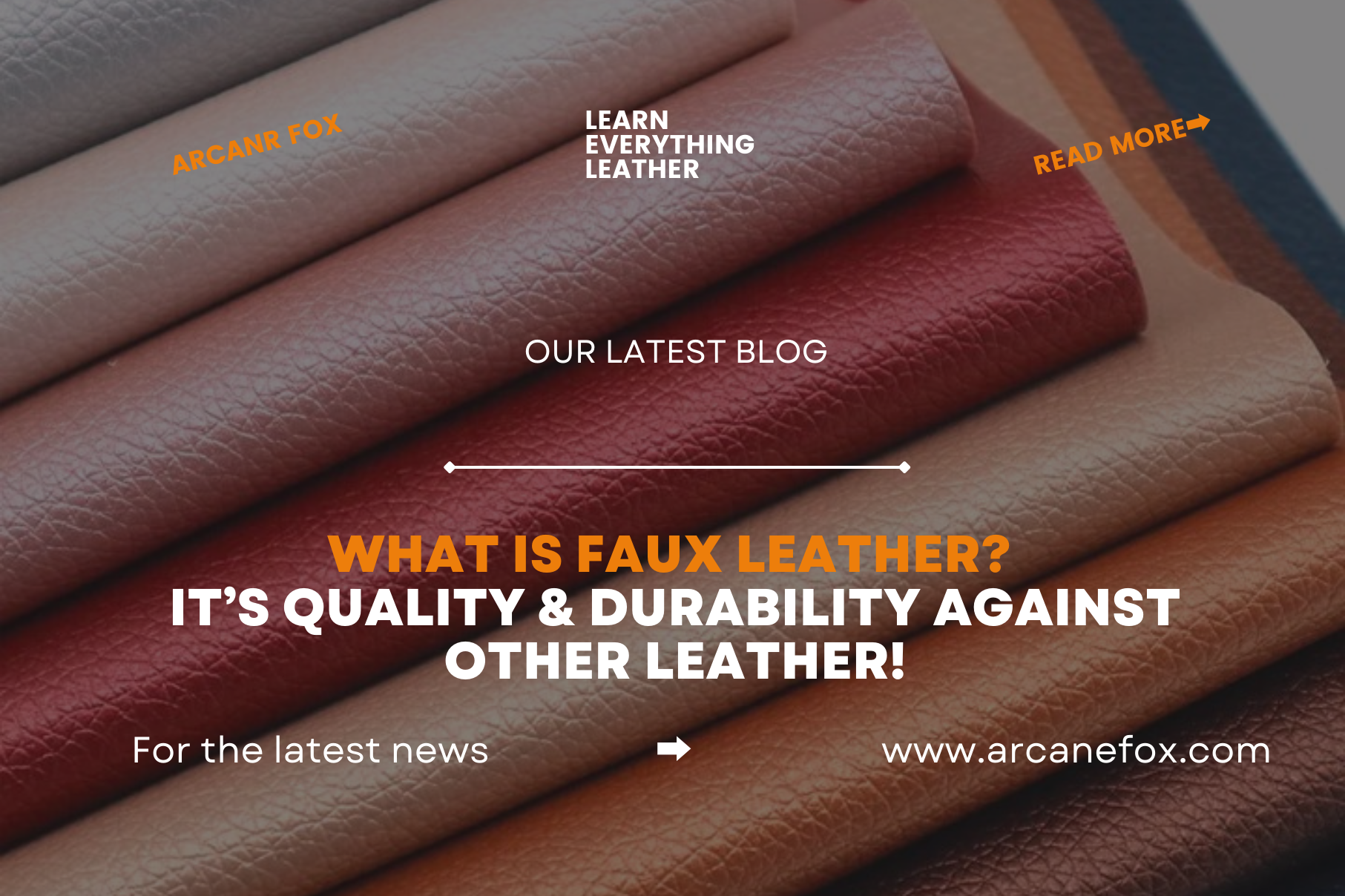
Illustrative image related to smooth faux leather
-
Materials: Smooth faux leather is typically made from polyurethane (PU) or polyvinyl chloride (PVC). The choice of material significantly impacts costs, with PU generally being more expensive due to its superior quality and eco-friendliness. Prices for smooth faux leather can range from $20 to $32 per yard, depending on the quality and supplier.
-
Labor: Labor costs encompass the wages of workers involved in manufacturing, cutting, and sewing. These costs can vary by region; for instance, labor is generally more affordable in developing countries compared to Europe or North America.
-
Manufacturing Overhead: This includes costs related to facilities, utilities, and administrative expenses. A significant portion of overhead can be attributed to the machinery used for cutting and finishing the faux leather, which can affect pricing.
-
Tooling: Initial tooling costs for custom designs can be substantial. If a buyer requires specific patterns or textures, these costs must be factored into the overall pricing.
-
Quality Control (QC): Ensuring product quality is essential, particularly for high-volume orders. QC processes can add to costs but are necessary to meet international standards and buyer specifications.
-
Logistics: Shipping and handling costs can vary widely based on the destination. International shipping often involves customs duties and tariffs that can significantly impact the final price.
-
Margin: Suppliers typically add a margin to cover their costs and profit, which can vary based on market conditions and competition.
What Influences the Pricing of Smooth Faux Leather?
Several factors can influence the pricing of smooth faux leather, including volume, specifications, quality certifications, and supplier factors.
-
Volume/MOQ (Minimum Order Quantity): Suppliers often offer better pricing for larger orders. Understanding the MOQ can help buyers negotiate more favorable terms.
-
Specifications and Customization: Custom designs, colors, and textures can drive up costs. Buyers should clearly communicate their specifications to avoid unexpected expenses.
-
Materials and Quality Certifications: Higher-quality materials and certifications (e.g., eco-friendly or hypoallergenic) can increase costs. Buyers should assess whether these factors align with their target market’s preferences.
-
Supplier Factors: The reputation and reliability of suppliers can affect pricing. Established suppliers may charge more due to their experience and quality assurance processes.
-
Incoterms: Understanding Incoterms (international commercial terms) is essential for international buyers. These terms define responsibilities for shipping, insurance, and tariffs, which can significantly impact total costs.
What Are Some Effective Buyer Tips for Negotiating Faux Leather Pricing?
Negotiating the best price for smooth faux leather requires strategic insights and an understanding of the total cost of ownership.
-
Leverage Bulk Discounts: Many suppliers offer discounts for bulk purchases. Buyers should compare prices across different suppliers to identify the best deals.
-
Consider Total Cost of Ownership: Beyond the initial purchase price, consider shipping, customs, and potential wastage. A lower upfront cost may not always translate to savings in the long run.
-
Negotiate Terms: Always negotiate payment terms, delivery schedules, and return policies. Flexibility in these areas can lead to significant cost savings.
-
Stay Informed on Market Trends: Keep abreast of market conditions, material costs, and trends in faux leather manufacturing. This knowledge can provide leverage during negotiations.
-
Understand Pricing Nuances for International Trade: Different regions may have varying pricing strategies. For instance, buyers from Africa or South America may encounter different logistics costs compared to those in Europe or the Middle East.
Disclaimer on Indicative Prices
The prices mentioned in this analysis are indicative and may vary based on market conditions, supplier agreements, and regional factors. Buyers are encouraged to obtain multiple quotes and perform due diligence to ensure they are making informed sourcing decisions.
Alternatives Analysis: Comparing smooth faux leather With Other Solutions
When evaluating materials for applications such as upholstery, fashion, or accessories, smooth faux leather presents a compelling option. However, it’s essential to consider viable alternatives that can fulfill similar roles, each with unique attributes and applications. This analysis compares smooth faux leather against two notable alternatives: genuine leather and cork fabric.
| Comparison Aspect | Smooth Faux Leather | Genuine Leather | Cork Fabric |
|---|---|---|---|
| Performance | Durable, water-resistant, and easy to clean; maintains appearance over time | Highly durable with a luxurious feel; develops a patina over time | Lightweight, water-resistant, and hypoallergenic; natural aesthetic |
| Cost | Generally lower price point, affordable for bulk purchases | Higher cost due to sourcing and processing | Moderate cost; varies based on treatment and sourcing |
| Ease of Implementation | Easy to sew and manipulate; no special tools required | Requires specialized tools and techniques for crafting | Simple to work with, but may require special adhesives |
| Maintenance | Low maintenance; typically spot clean | Requires conditioning and special cleaning to maintain quality | Easy to clean; usually just wipe with a damp cloth |
| Best Use Case | Ideal for fashion items, bags, and upholstery | Best suited for high-end products, luxury goods, and durable items | Great for eco-friendly products, light upholstery, and fashion accessories |
What Are the Advantages and Disadvantages of Genuine Leather Compared to Smooth Faux Leather?
Genuine leather is revered for its durability and luxurious feel. It develops a unique character over time, adding to its appeal, especially in high-end markets. However, it comes with a higher price tag and requires more maintenance to keep it in optimal condition. For B2B buyers targeting luxury markets, genuine leather can be a worthwhile investment despite its higher upfront cost.
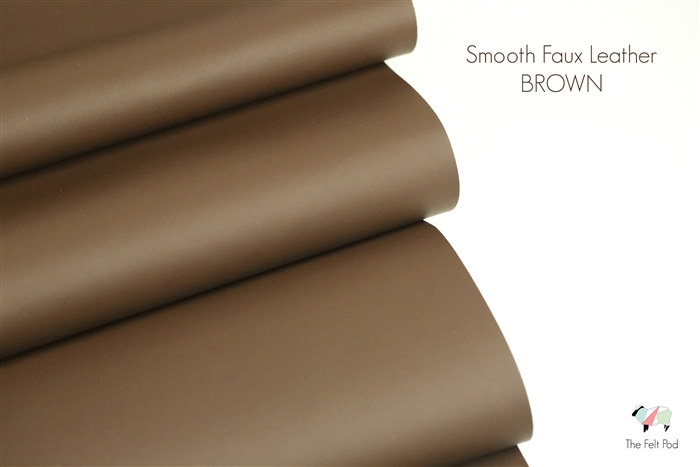
Illustrative image related to smooth faux leather
How Does Cork Fabric Serve as an Eco-Friendly Alternative to Smooth Faux Leather?
Cork fabric is an innovative alternative that stands out due to its eco-friendliness and unique aesthetic. Sourced from the bark of cork oak trees, it is sustainable and biodegradable. It offers a lightweight option with decent water resistance and a natural look. However, cork can be less durable than faux leather, particularly in high-wear applications. This makes it ideal for eco-conscious brands looking to appeal to sustainability-minded consumers.
How Can B2B Buyers Determine the Right Material for Their Needs?
Selecting the appropriate material involves understanding the specific requirements of your project. For fashion and accessories, smooth faux leather offers versatility and cost-effectiveness, making it suitable for a wide range of applications. If your focus is on high-end products, genuine leather may be justified despite its higher costs. For businesses emphasizing sustainability, cork fabric presents a compelling choice. Ultimately, assessing factors such as budget, target market, and intended use will guide buyers in making the most informed decision for their specific needs.
Essential Technical Properties and Trade Terminology for smooth faux leather
What Are the Key Technical Properties of Smooth Faux Leather in B2B Transactions?
Smooth faux leather is increasingly favored in various industries, from fashion to furniture, due to its versatility and cost-effectiveness. Understanding its technical properties is essential for B2B buyers to make informed purchasing decisions. Here are some critical specifications to consider:
1. Material Composition
Smooth faux leather is predominantly made from polyurethane (PU) or polyvinyl chloride (PVC). PU leather is more environmentally friendly and provides a softer touch, while PVC offers enhanced durability. Buyers should assess the material grade to ensure it meets their specific application needs, whether for upholstery, bags, or automotive interiors.
2. Weight and Thickness
The weight of faux leather is often measured in ounces per yard, while thickness is specified in millimeters. A typical range for smooth faux leather is between 0.8mm to 1.5mm. These properties affect the material’s drape, durability, and suitability for different uses. Heavier and thicker materials are ideal for upholstery, while lighter variants may be better suited for garments or accessories.
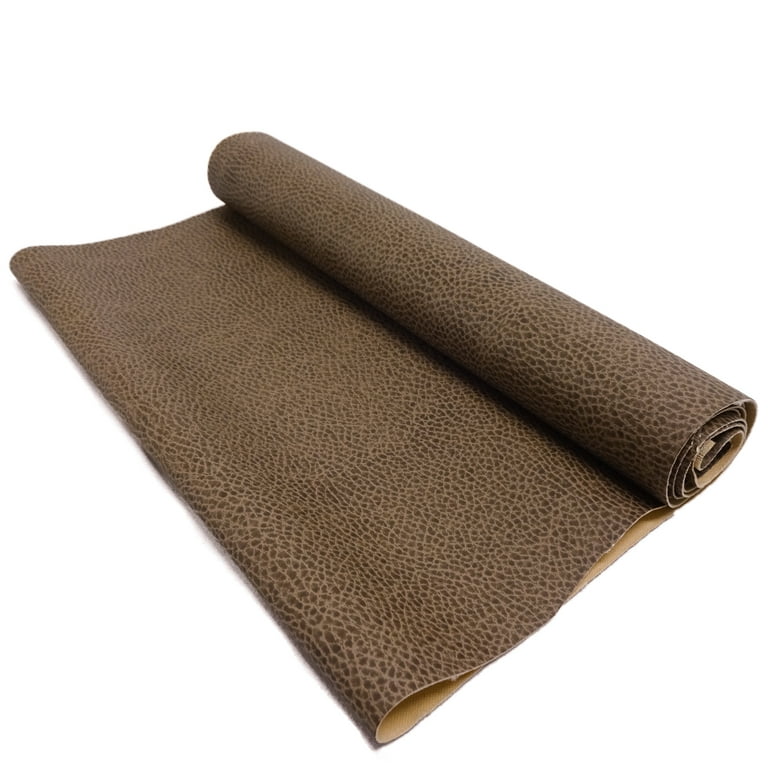
Illustrative image related to smooth faux leather
3. Abrasion Resistance
This property measures how well the material withstands wear and tear. It is essential for products that will experience frequent use, such as bags or automotive interiors. Abrasion resistance is often tested using the Martindale method, which simulates rubbing against a surface. A higher number indicates better durability, which can be a selling point for B2B buyers looking for long-lasting materials.
4. UV Resistance
UV resistance is crucial for applications exposed to sunlight, such as outdoor furniture or vehicle interiors. Smooth faux leather with high UV resistance will not fade or degrade quickly when exposed to sunlight, maintaining its aesthetic appeal. This property can significantly influence the longevity of products made from faux leather, making it an important consideration for buyers.
5. Cleaning and Maintenance
Smooth faux leather is generally easy to clean, often requiring just a damp cloth and mild soap. Some manufacturers provide specific cleaning guidelines, which can help buyers minimize maintenance efforts. Understanding the cleaning requirements can be beneficial for businesses that prioritize customer satisfaction and longevity of their products.
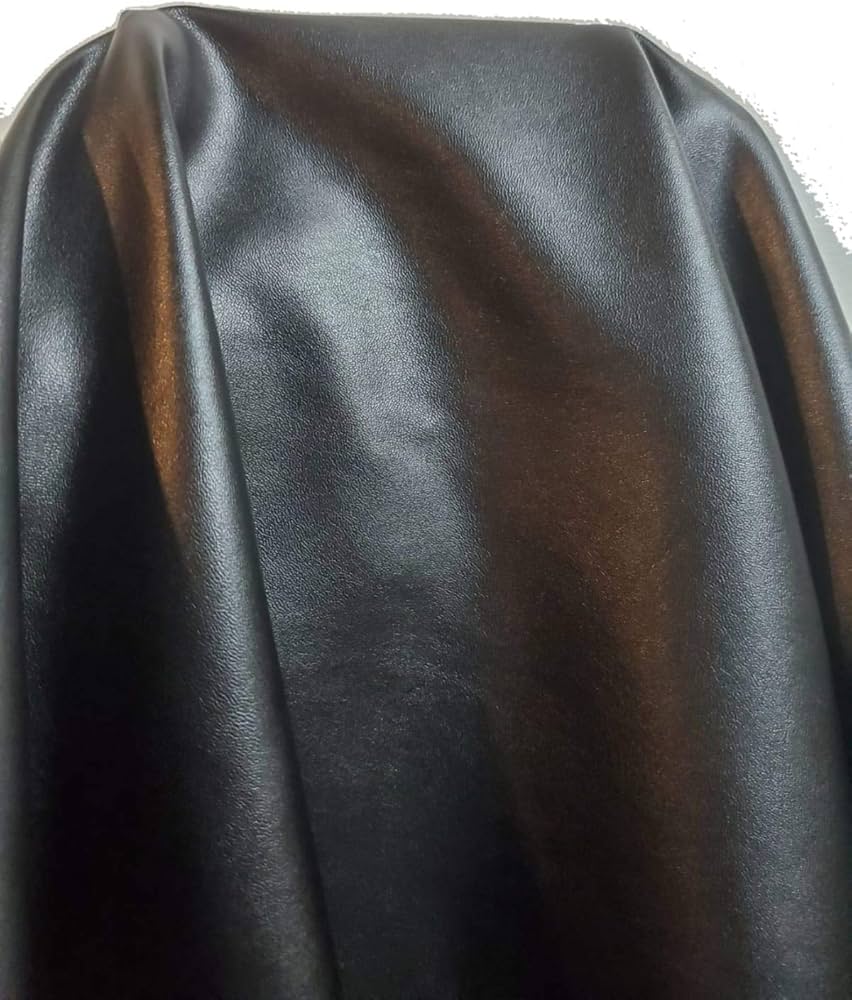
Illustrative image related to smooth faux leather
What Are Common Trade Terminologies Relevant to Smooth Faux Leather?
Familiarity with industry jargon is vital for effective communication in B2B transactions. Here are some common terms associated with smooth faux leather:
1. OEM (Original Equipment Manufacturer)
OEM refers to a company that produces parts or products that are used in another company’s end product. For smooth faux leather, this could mean sourcing materials from an OEM that specializes in faux leather production, ensuring quality and consistency.
2. MOQ (Minimum Order Quantity)
MOQ indicates the smallest quantity a supplier is willing to sell. Understanding MOQ is crucial for buyers to manage inventory effectively and negotiate better terms with suppliers, especially when sourcing large quantities of smooth faux leather.
3. RFQ (Request for Quotation)
An RFQ is a document issued by a buyer to solicit price quotations from suppliers. It is an essential step in procurement that allows buyers to compare costs, terms, and conditions before making a purchasing decision.
4. Incoterms (International Commercial Terms)
Incoterms are a set of predefined international trade terms that clarify the responsibilities of buyers and sellers. Familiarity with these terms can help businesses navigate shipping, insurance, and risk management when importing smooth faux leather from various regions.
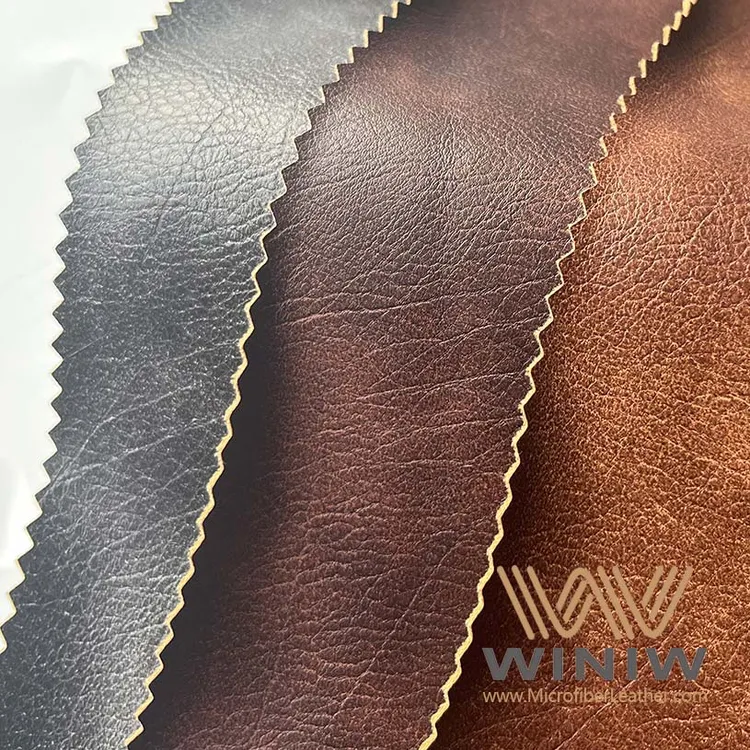
Illustrative image related to smooth faux leather
5. Lead Time
Lead time refers to the amount of time it takes from placing an order until the product is delivered. For B2B buyers, understanding lead times is crucial for planning production schedules and inventory management.
6. Certification Standards
Certification standards, such as ISO or OEKO-TEX, verify that materials meet specific environmental and safety requirements. Buyers should look for these certifications when sourcing smooth faux leather to ensure compliance with international regulations and consumer expectations.
By grasping these technical properties and trade terminologies, B2B buyers can make informed decisions, ensuring they select the right smooth faux leather products for their business needs.
Navigating Market Dynamics and Sourcing Trends in the smooth faux leather Sector
What Are the Current Market Dynamics and Key Trends in the Smooth Faux Leather Sector?
The global smooth faux leather market is experiencing significant growth, driven by increased consumer demand for sustainable and cost-effective alternatives to genuine leather. Factors such as rising disposable incomes in emerging markets, especially in Africa and South America, are fueling demand for faux leather products in various applications, including fashion, upholstery, and automotive industries. The versatility of smooth faux leather allows for its use in a wide range of products, from handbags to interior furnishings, making it a sought-after material among manufacturers.
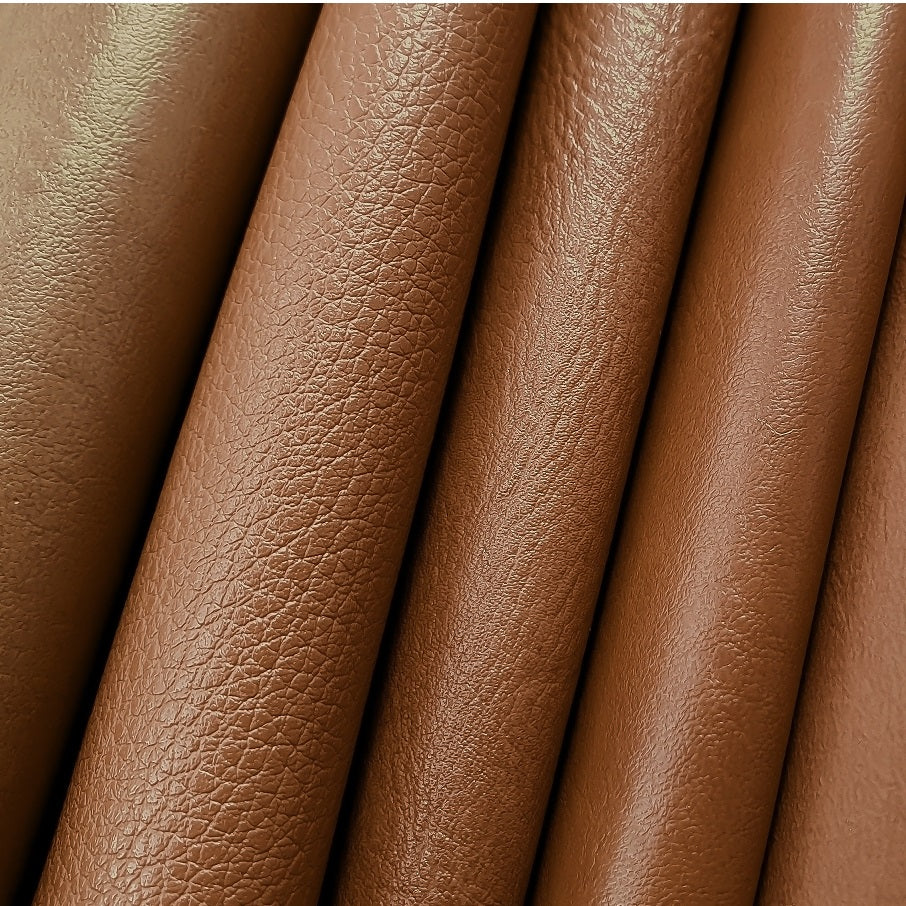
Illustrative image related to smooth faux leather
Emerging technologies in the sourcing of smooth faux leather are reshaping the market landscape. Digital platforms are enabling B2B buyers to connect directly with suppliers, streamlining the procurement process and enhancing transparency. Innovations in manufacturing techniques, such as 3D printing and automated cutting, are also reducing lead times and production costs. Furthermore, the rise of e-commerce has expanded market access for small and medium-sized enterprises (SMEs), allowing them to compete effectively in the global marketplace.
Additionally, the integration of Artificial Intelligence (AI) and data analytics is improving inventory management and demand forecasting, helping businesses optimize their supply chains. As international B2B buyers increasingly seek to diversify their sourcing strategies, understanding these market dynamics and technological advancements is crucial for making informed purchasing decisions.
How Does Sustainability and Ethical Sourcing Impact the Smooth Faux Leather Market?
Sustainability and ethical sourcing are paramount considerations in the smooth faux leather sector. Traditional leather production has significant environmental impacts, including deforestation and high water usage. In contrast, smooth faux leather offers a more eco-friendly alternative, particularly when sourced from recycled or bio-based materials. Many suppliers are now focusing on producing vegan-friendly options that do not compromise on quality or aesthetics, appealing to environmentally conscious consumers.
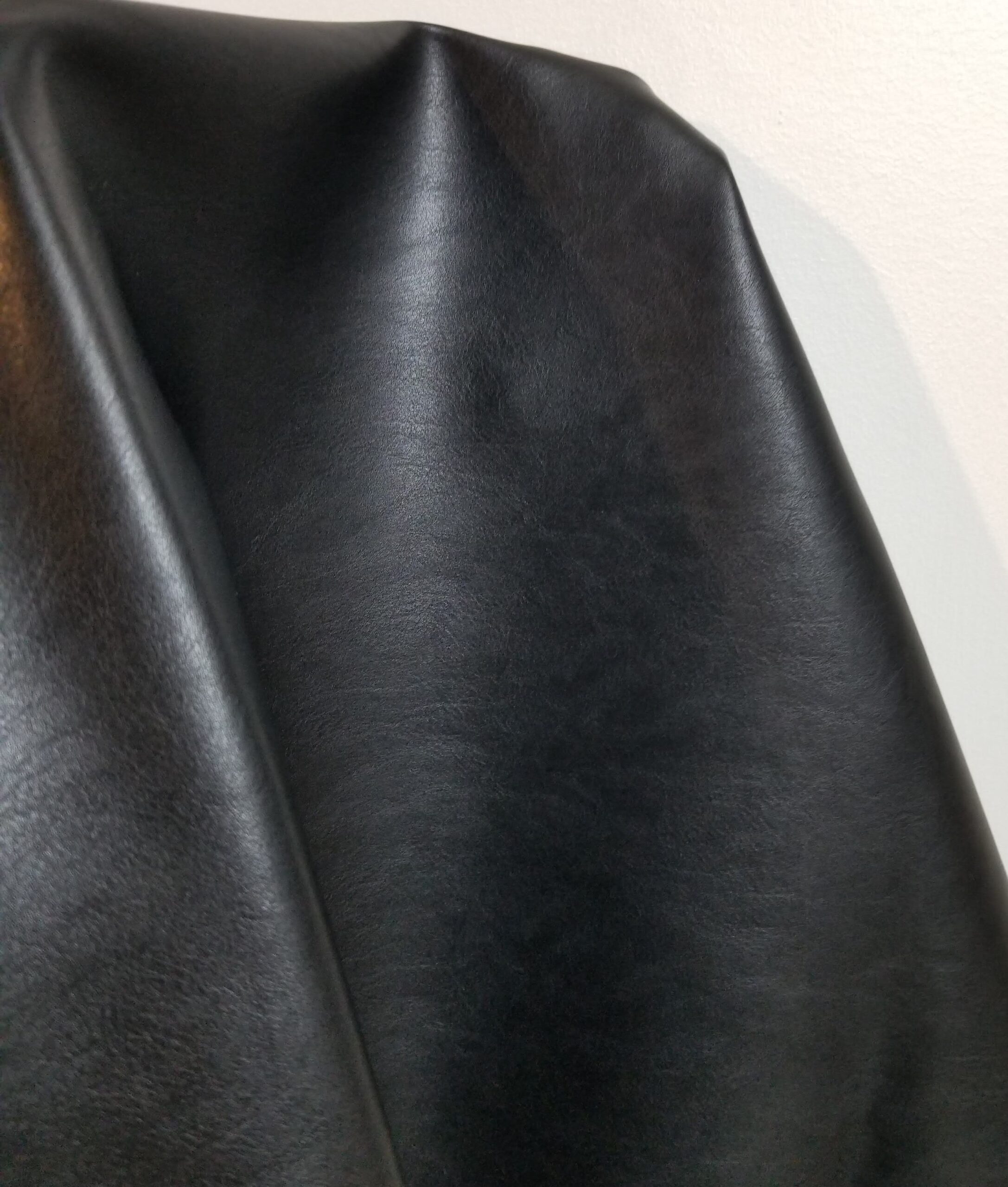
Illustrative image related to smooth faux leather
The importance of ethical supply chains cannot be overstated. International B2B buyers are increasingly scrutinizing their suppliers’ practices to ensure compliance with social and environmental standards. Certifications such as Global Recycled Standard (GRS) and OEKO-TEX® Standard 100 are becoming essential for suppliers aiming to demonstrate their commitment to sustainability. These certifications not only enhance brand reputation but also provide buyers with the assurance that their sourcing practices are aligned with global sustainability goals.
As the market evolves, buyers from regions such as the Middle East and Europe are particularly well-positioned to leverage the growing demand for ethically sourced smooth faux leather. By prioritizing suppliers who adhere to sustainable practices, businesses can differentiate themselves in a competitive marketplace while contributing to a more sustainable future.
What is the Evolution of Smooth Faux Leather in the B2B Context?
The evolution of smooth faux leather traces back to the mid-20th century when advancements in synthetic materials began to offer alternatives to traditional leather. Initially, these materials were perceived as inferior, but technological advancements have significantly improved their quality, durability, and aesthetic appeal. The introduction of polyurethane (PU) and polyvinyl chloride (PVC) has allowed manufacturers to create faux leather that closely mimics the look and feel of genuine leather while being more affordable and easier to maintain.
In recent years, the industry has shifted towards more sustainable practices, with a growing emphasis on the environmental impacts of production methods. This change has led to the development of innovative materials that utilize recycled plastics and bio-based components. As a result, the smooth faux leather market has transformed from a niche segment to a mainstream choice in various industries, including fashion, automotive, and furniture, catering to the evolving preferences of modern consumers and businesses alike.
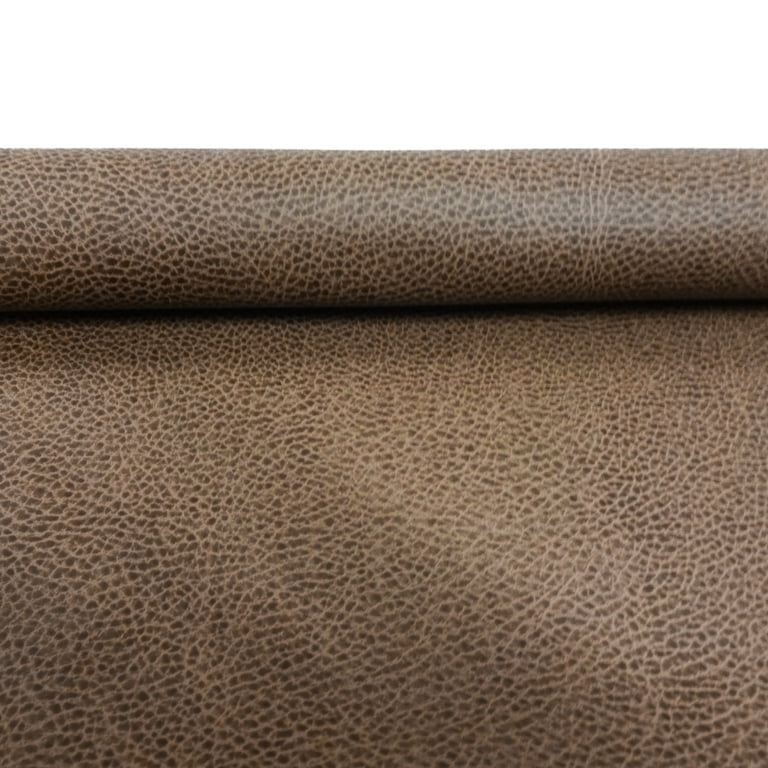
Illustrative image related to smooth faux leather
In conclusion, understanding the dynamics of the smooth faux leather market, coupled with a commitment to sustainability and ethical sourcing, is essential for B2B buyers seeking to navigate this growing sector effectively.
Frequently Asked Questions (FAQs) for B2B Buyers of smooth faux leather
1. How do I choose the right smooth faux leather for my products?
Selecting the right smooth faux leather involves considering several factors, including the intended application, texture, durability, and color options. For products like bags or upholstery, prioritize materials that are soft yet sturdy, with a high abrasion resistance. Check for certifications that ensure the material is safe and environmentally friendly, especially if you’re exporting to regions with strict regulations. Request samples to evaluate the look and feel before committing to a large order, ensuring it meets your quality standards.
2. What are the common uses of smooth faux leather in manufacturing?
Smooth faux leather is versatile and commonly used in various applications, including fashion accessories, upholstery, automotive interiors, and home décor. Its luxurious appearance mimics genuine leather while providing a cost-effective alternative. Additionally, it’s a popular choice for crafting items like bags, wallets, and clothing due to its ease of sewing and maintenance. When discussing with suppliers, specify your intended use to ensure they recommend the most suitable material.
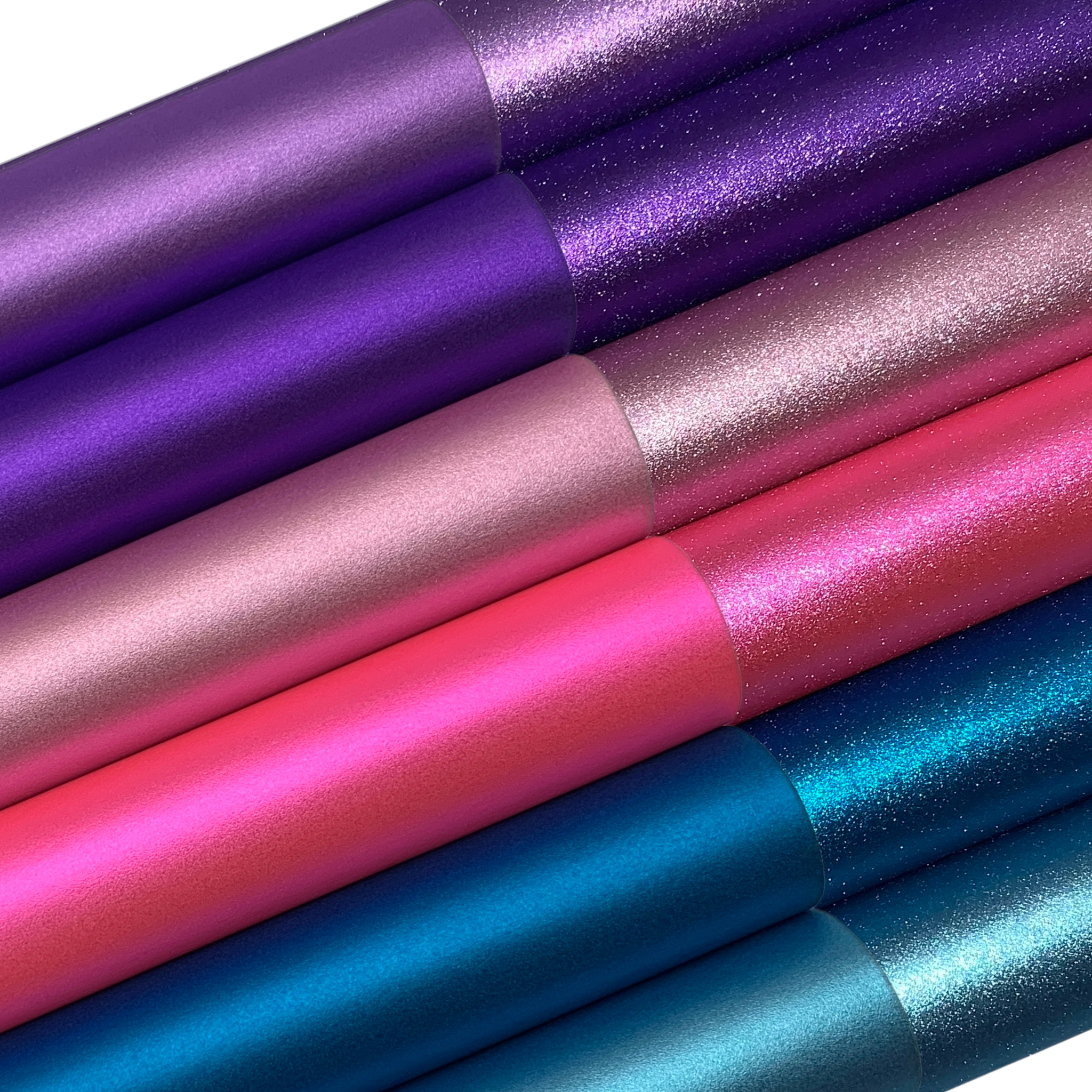
Illustrative image related to smooth faux leather
3. What minimum order quantities (MOQs) should I expect when sourcing smooth faux leather?
Minimum order quantities (MOQs) for smooth faux leather can vary significantly depending on the supplier and the type of material. Typically, MOQs range from 50 to 500 yards. However, many suppliers are flexible and may offer lower MOQs for first-time buyers or for certain colors and textures. Always clarify MOQs during initial discussions and inquire about any potential bulk discounts that may apply to larger orders.
4. How can I vet suppliers for smooth faux leather to ensure quality and reliability?
To vet suppliers effectively, start by researching their reputation within the industry. Look for reviews or testimonials from previous customers, and consider requesting samples to assess the quality of their materials firsthand. Verify their certifications, such as ISO or other relevant quality standards, and inquire about their production processes. Establish clear communication and ask about their lead times, return policies, and customer support to ensure they align with your business needs.
5. What payment terms are common in international transactions for faux leather?
Common payment terms for international transactions include letters of credit, wire transfers, and payment upon receipt of goods. Many suppliers may require a deposit upfront (typically 30%) with the balance due before shipment or upon delivery. It’s essential to discuss payment terms during negotiations to ensure they are mutually beneficial. Additionally, consider using escrow services for large transactions to protect against fraud.
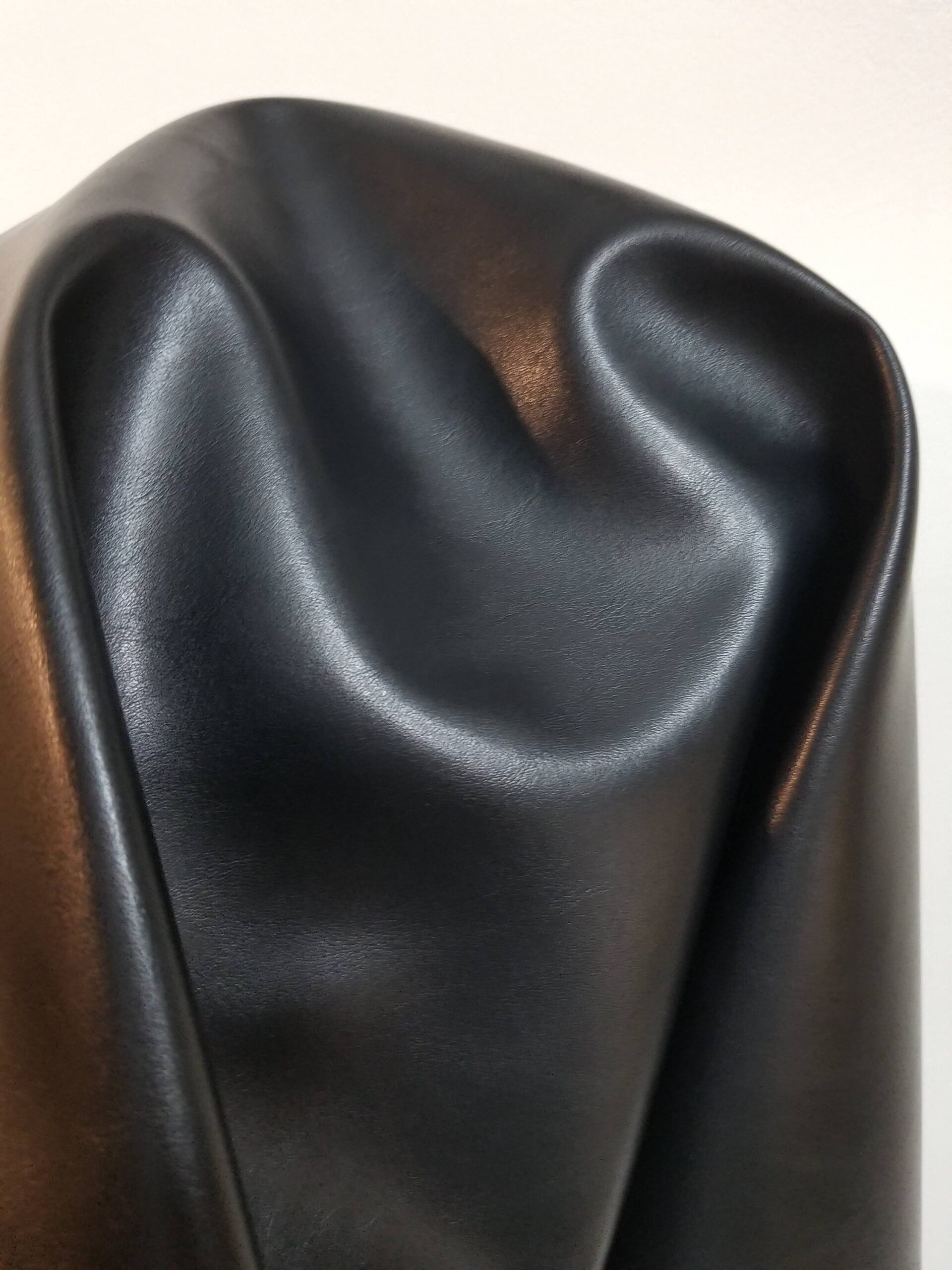
Illustrative image related to smooth faux leather
6. How do I ensure quality assurance (QA) for my smooth faux leather orders?
Quality assurance can be ensured by implementing a multi-step process. First, establish clear specifications regarding the quality, texture, and color of the faux leather. Request pre-production samples and conduct inspections at various stages of production. Consider hiring third-party quality inspectors to verify that the materials meet your standards before shipping. Additionally, maintain open communication with your supplier throughout the production process to address any issues promptly.
7. What logistics considerations should I keep in mind when importing smooth faux leather?
When importing smooth faux leather, consider shipping options, customs regulations, and potential tariffs that may apply to your order. Choose a reliable freight forwarder who understands the complexities of international shipping and can help navigate customs clearance. Be mindful of lead times, as shipping can take longer due to customs inspections. Additionally, ensure your shipping documents are in order to avoid delays at the border.
8. Are there customization options available for smooth faux leather?
Yes, many suppliers offer customization options for smooth faux leather, including colors, textures, and patterns. You can request specific prints or finishes to align with your branding or product requirements. However, customization may come with higher MOQs and additional costs, so it’s essential to discuss these factors upfront. Inquire about the lead times for custom orders to plan your production schedule accordingly.
Top 5 Smooth Faux Leather Manufacturers & Suppliers List
1. Sew Hungry Hippie – Smooth Faux Leather in Dark Pink
Domain: sewhungryhippie.com
Registered: 2018 (7 years)
Introduction: {“products”:[{“name”:”Smooth Faux Leather in Dark Pink”,”price”:”$26.00 USD”,”vip_price”:”$20.80″},{“name”:”Deep Hunter Green smooth vinyl”,”price”:”$26.00 USD”,”vip_price”:”$20.80″},{“name”:”LIGHT PURPLE smooth vinyl”,”price”:”$26.00 USD”,”vip_price”:”$20.80″},{“name”:”Cherry Blossoms Smooth custom vinyl”,”price”:”$27.47 USD”,”vip_price”:”$21.98″},{“name”:”Agate Smooth Vinyl roll”,”price”:”$26.00…
2. Sallie Tomato – Faux Leather Collection
Domain: sallietomato.com
Registered: 2015 (10 years)
Introduction: Faux Leather collection by Sallie Tomato includes 66 products available in various colors and textures. Colors include Beige, Black, Blue, Brown, Green, Grey, Navy, Orange, Pink, Purple, Red, Teal, White, and Yellow. Textures available are Alligator, Basket Weave, Crocodile, Legacy, Limited Edition, Lite, Ostrich, Pebble, Rugged, and Shimmer. The fabric is sold by quarter yard, and the price is ge…
3. All About Fabrics – Smooth Textured Faux Leather Fabric
Domain: allaboutfabrics.com
Registered: 2002 (23 years)
Introduction: {“name”: “Smooth Textured Faux Leather Fabric in Latte Tan”, “width”: “55 inches”, “primary_fiber”: “100% Vinyl”, “description”: “This smooth textured faux leather fabric is featured in latte tan. Uses include upholstery, seat covers and totes.”, “cleaning_instructions”: “Spot clean with water and mild soap.”, “sku”: “A47C 1/21”, “regular_price”: “$29.97”, “shipping_info”: {“shipping_options”: “10…
4. Decorative Fabrics Direct – PU Leather & Faux Leather
Domain: decorativefabricsdirect.com
Registered: 2004 (21 years)
Introduction: PU Leather & Faux Leather | Vinyl Upholstery Fabric. Terms: Free Shipping Coupon Code: SHIPFREE for Most $199 Orders. Available for wholesale purchase by the yard or full roll. Brands include Naugahyde, Omnova Boltaflex, Nassimi, and Spradling. Suitable for furniture, automotive, marine, and commercial use. Features: Easy to clean, durable, available in rich colors, and significantly lower cost th…
5. Pip Supply – Cream Solid Faux Leather Sheets
Domain: pipsupply.com
Registered: 2018 (7 years)
Introduction: Cream Solid Smooth Faux Leather Sheets
Strategic Sourcing Conclusion and Outlook for smooth faux leather
In the dynamic landscape of the faux leather market, strategic sourcing emerges as a critical component for B2B buyers looking to optimize their procurement processes. Smooth faux leather offers a versatile solution for various applications, including upholstery, fashion, and accessories, appealing to diverse consumer preferences across global markets. With its affordability and ease of use, this material not only mirrors the luxurious appeal of genuine leather but also provides significant cost savings, making it an attractive option for manufacturers and retailers alike.
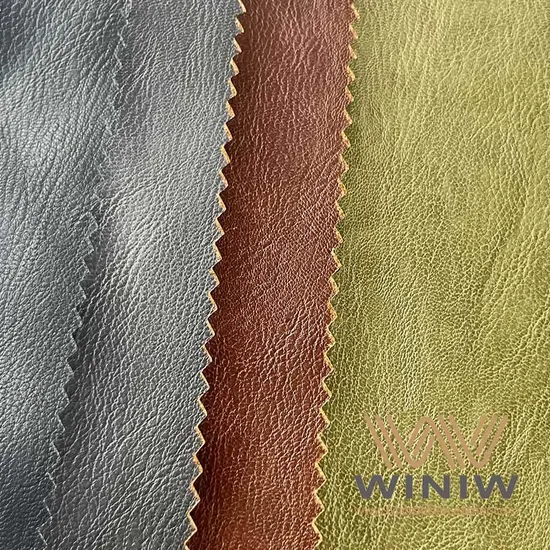
Illustrative image related to smooth faux leather
As buyers from regions such as Africa, South America, the Middle East, and Europe navigate their sourcing strategies, understanding the nuances of smooth faux leather—such as available textures, cleaning requirements, and bulk purchasing options—will enhance their product offerings. Collaborating with reliable suppliers who can provide consistent quality and innovative designs is essential for maintaining a competitive edge.
Looking ahead, the demand for sustainable and ethically sourced materials is poised to grow. B2B buyers are encouraged to proactively seek partnerships that prioritize eco-friendly practices in the faux leather supply chain. Embrace this opportunity to not only meet market demand but also position your brand as a leader in sustainability. Engage with suppliers today to explore the vast potential of smooth faux leather and unlock new avenues for growth.
Important Disclaimer & Terms of Use
⚠️ Important Disclaimer
The information provided in this guide, including content regarding manufacturers, technical specifications, and market analysis, is for informational and educational purposes only. It does not constitute professional procurement advice, financial advice, or legal advice.
While we have made every effort to ensure the accuracy and timeliness of the information, we are not responsible for any errors, omissions, or outdated information. Market conditions, company details, and technical standards are subject to change.
B2B buyers must conduct their own independent and thorough due diligence before making any purchasing decisions. This includes contacting suppliers directly, verifying certifications, requesting samples, and seeking professional consultation. The risk of relying on any information in this guide is borne solely by the reader.
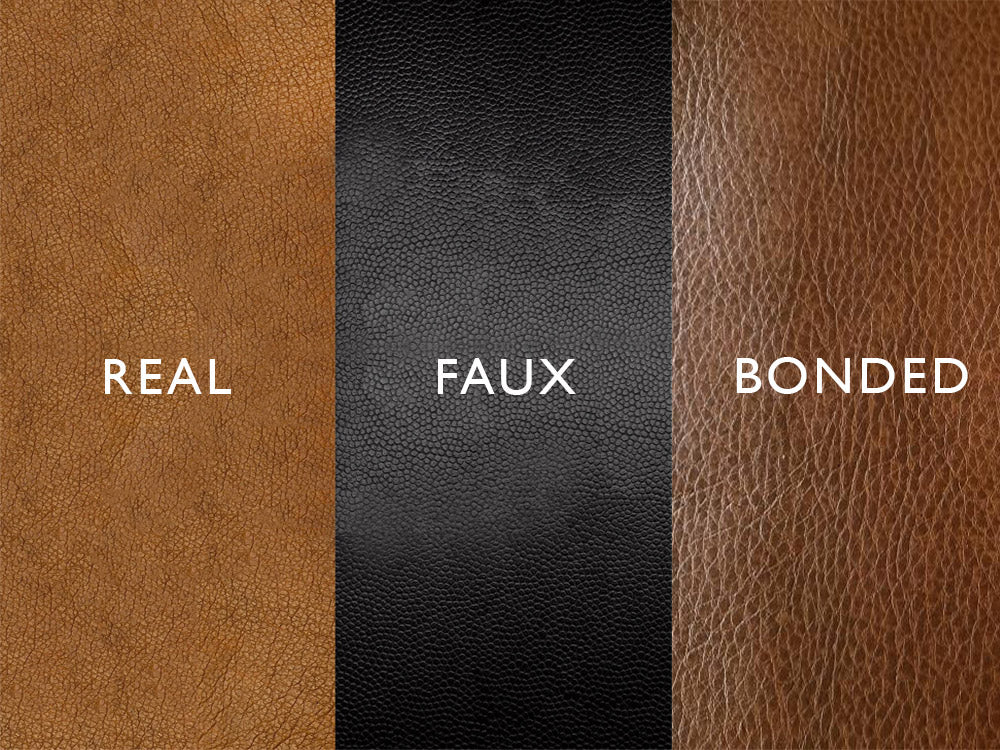
Illustrative image related to smooth faux leather


